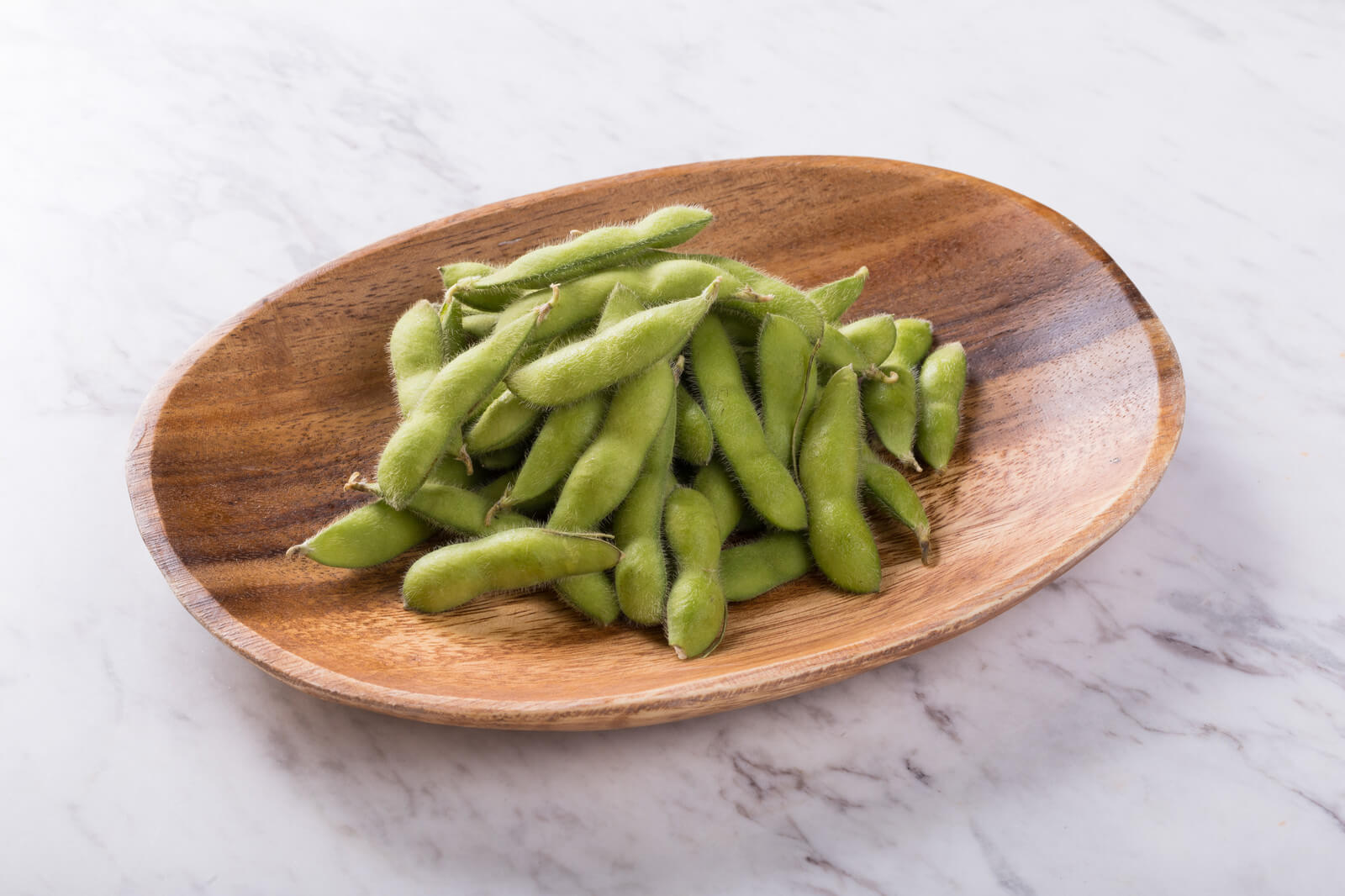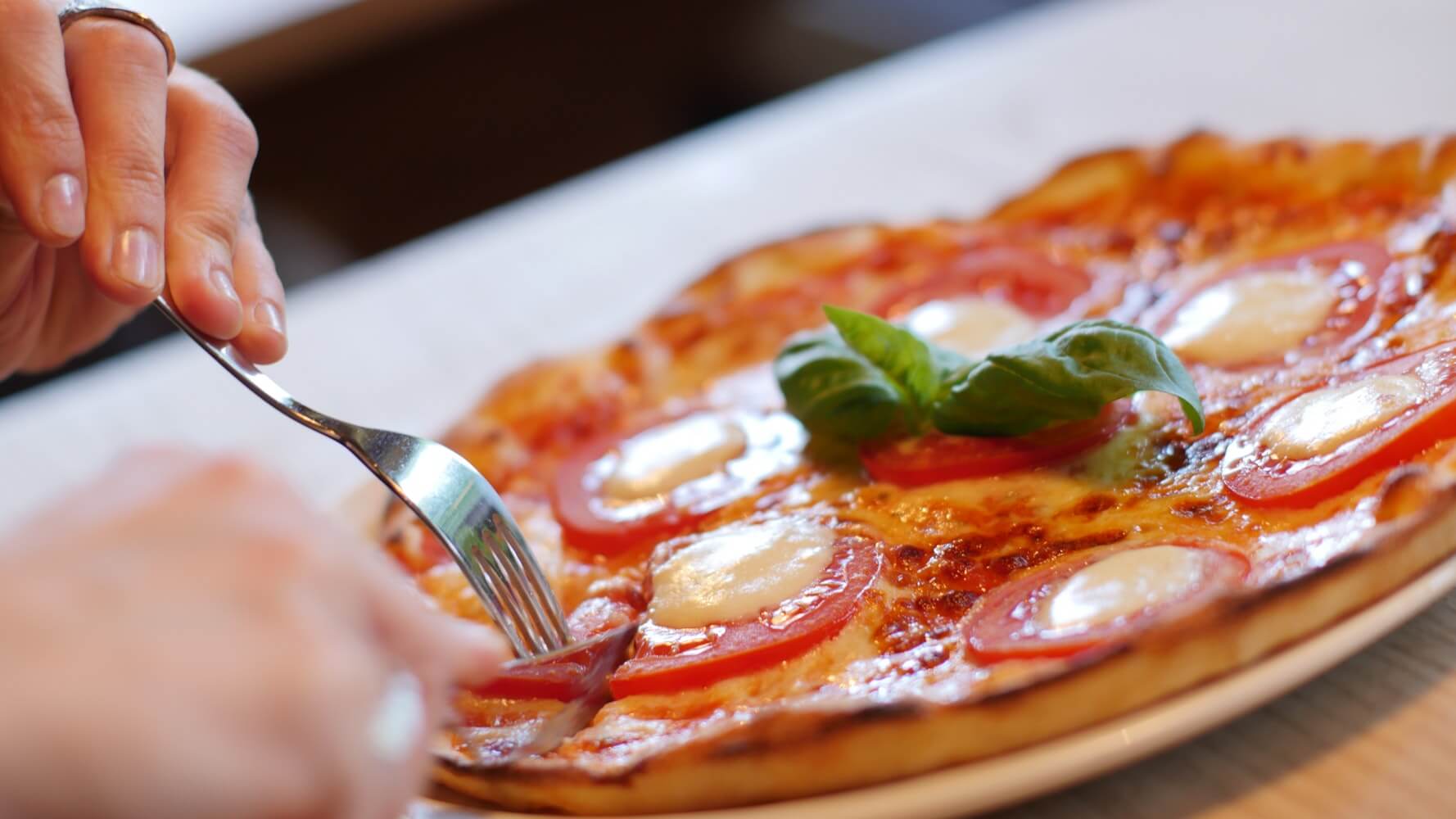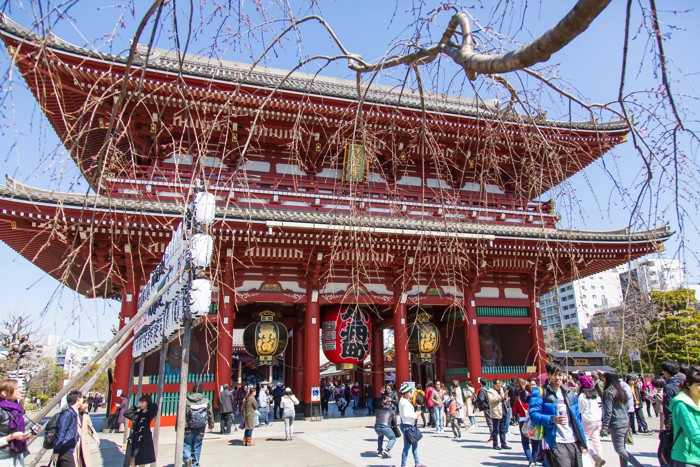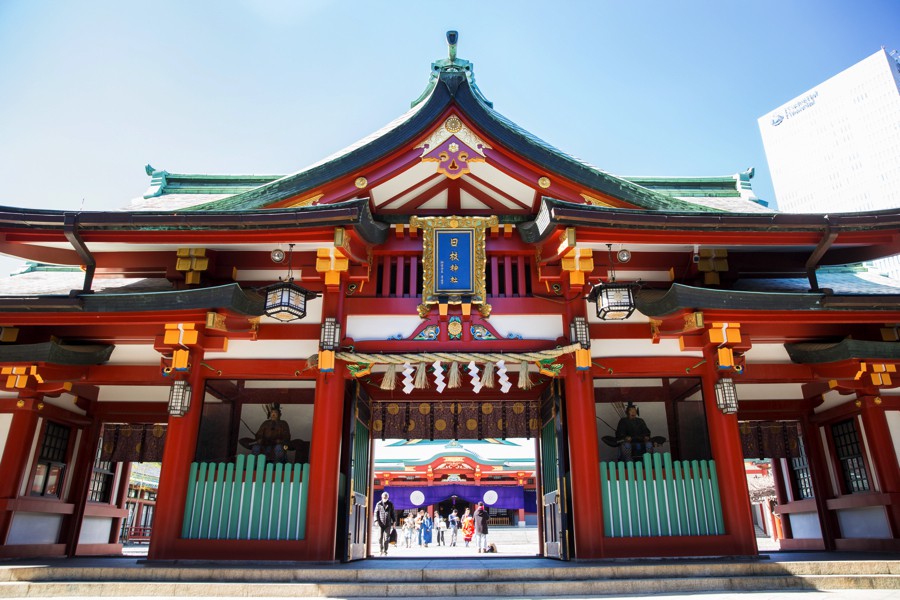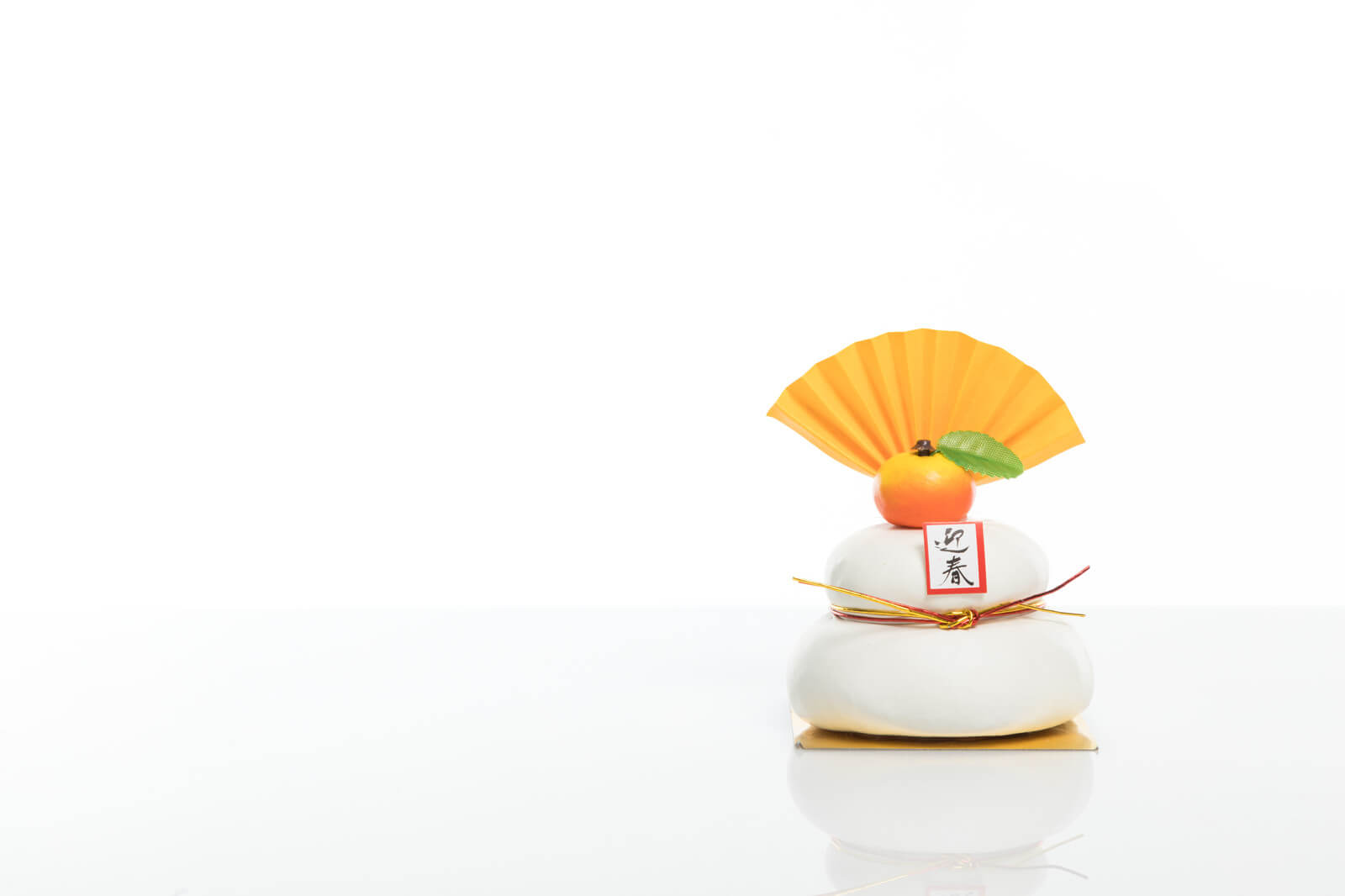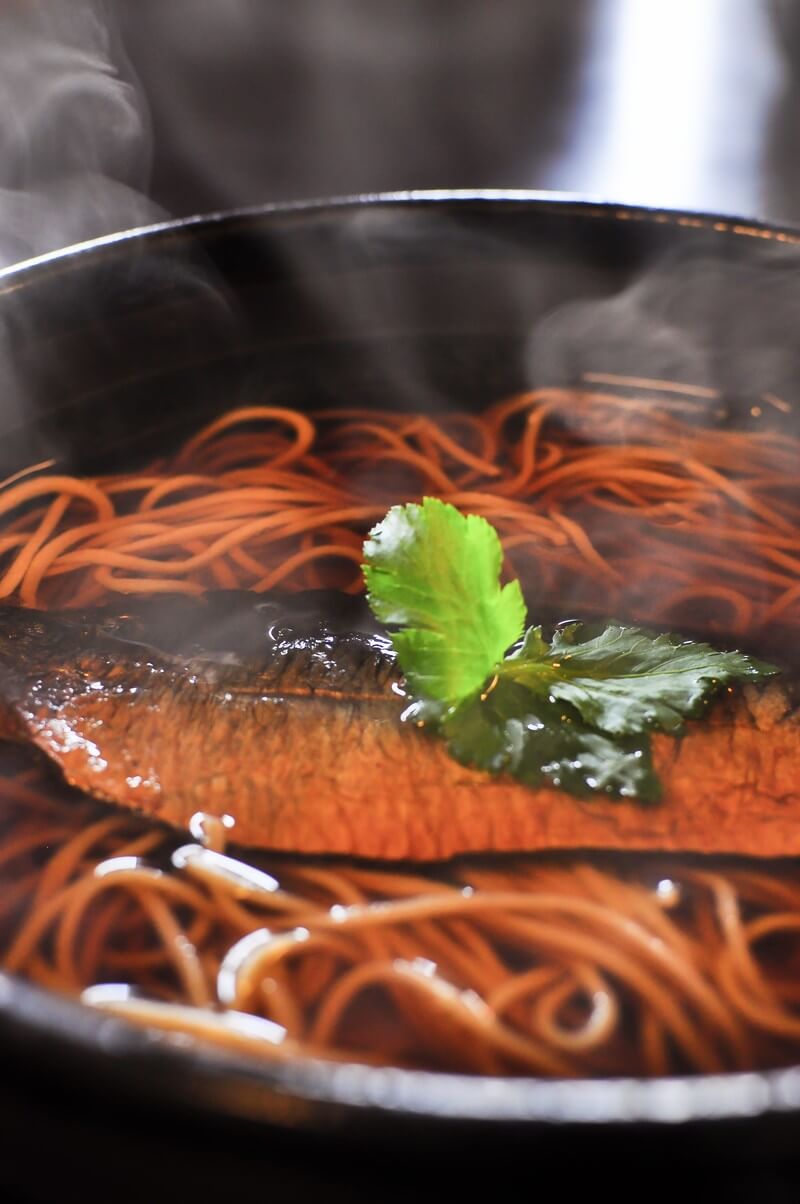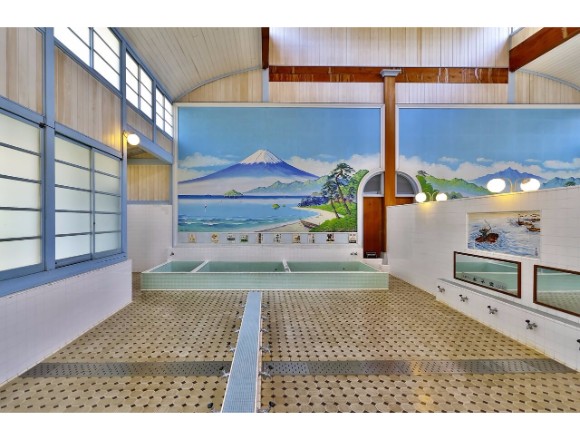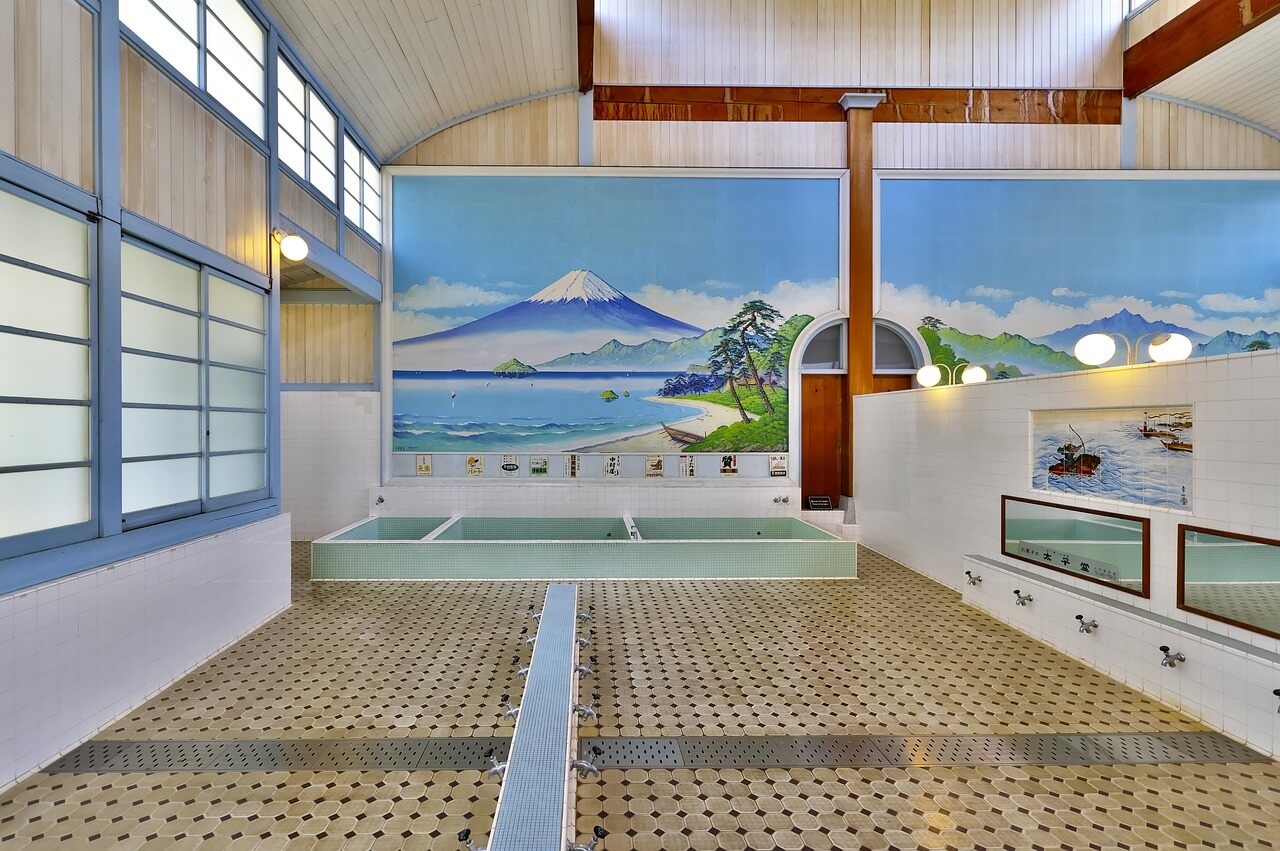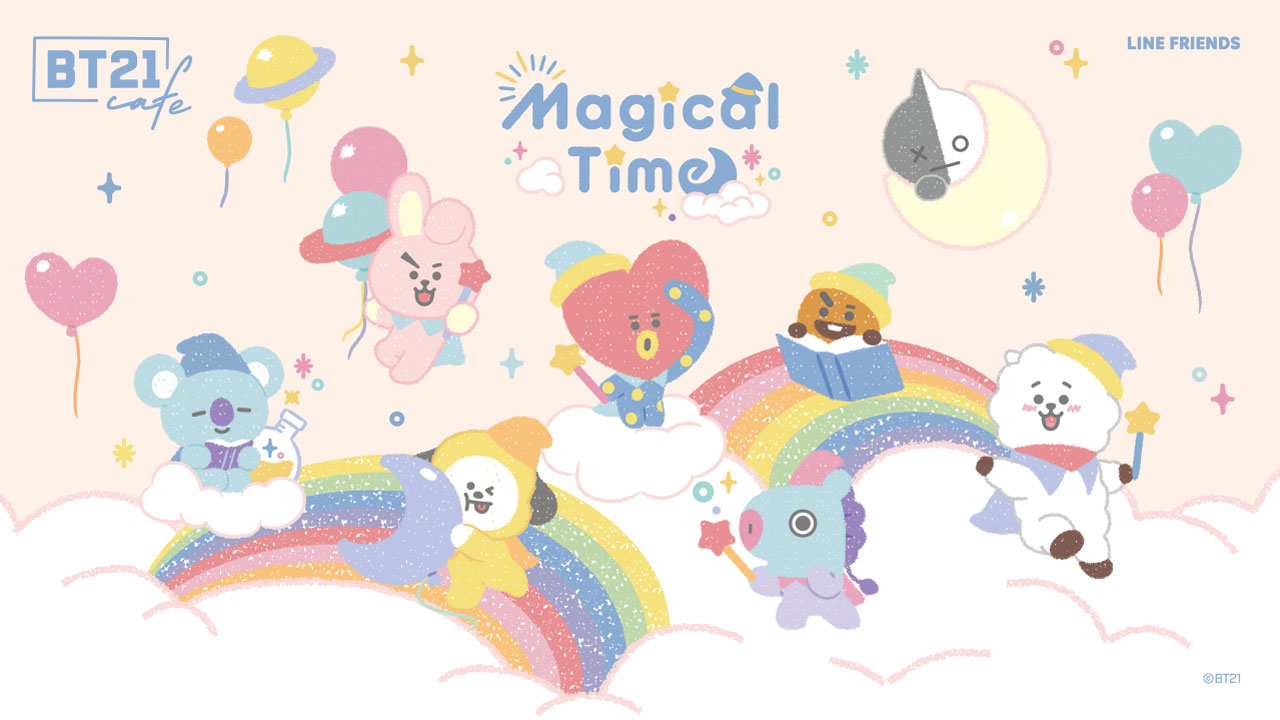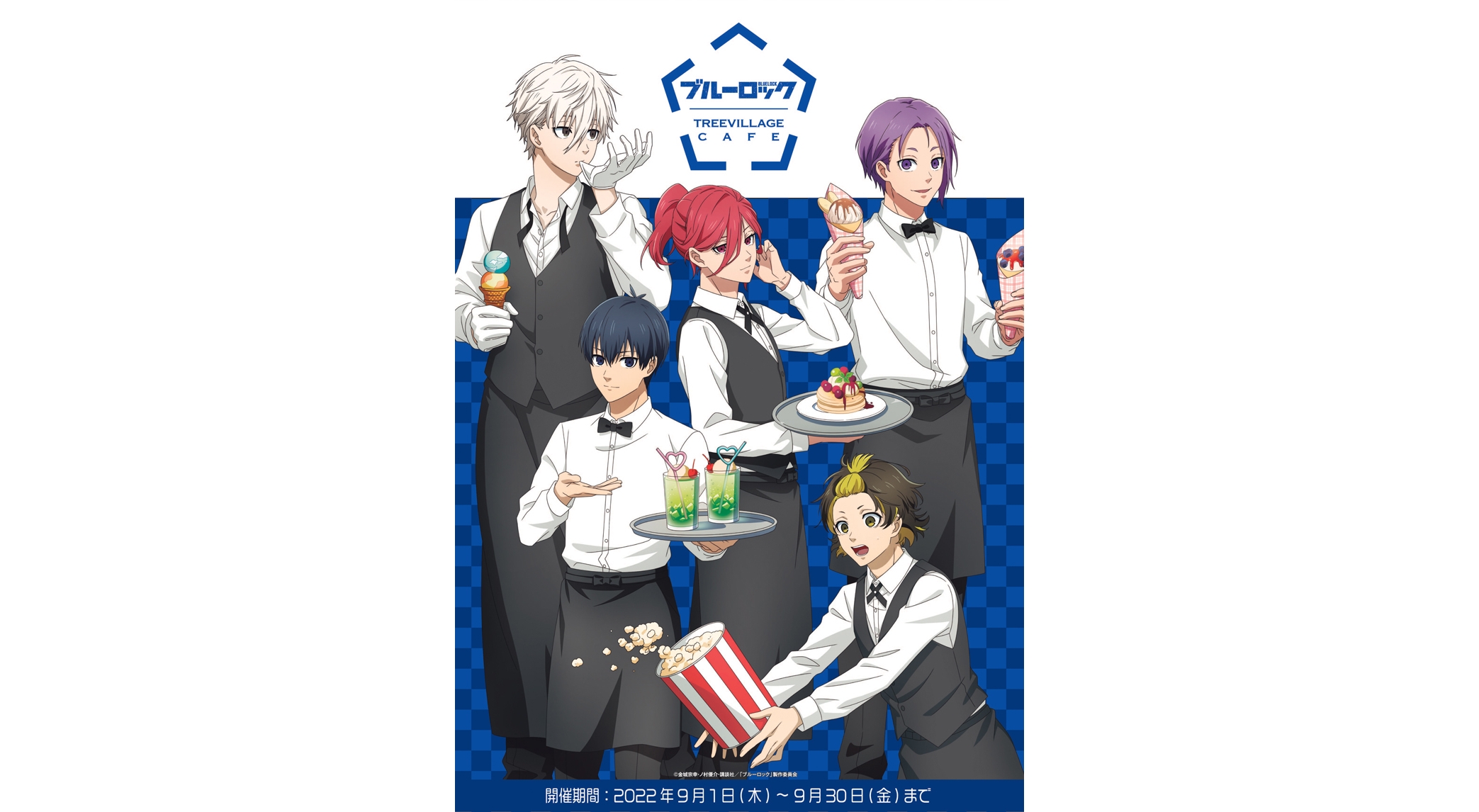Travel Q&A: 10 Rules & On-the-House Services at Japanese Restaurants
Restaurants in Japan have a very different list of rules, on-the-house services and etiquette standards compared to other countries. If you enter a restaurant when in Japan without knowing some of these things you might make a mistake!
We’ve put together a list of 10 important points to learn before dining out in Japan.
1.Don’t give tips
The fact that you don’t need to give tips as restaurants in Japan can be bewildering to some foreign tourists. In Japan, there’s normally no service charge, unless it’s a high-end restaurant, in which case it’s possible that a service charge will be added. If you force a tip on the staff, they will get told off by their superiors later, so keep that in mind.
2.Watch out for ‘Otooshi’
Otooshi, also known as tsukidashi, are small appetizers served at bars and establishments that sell alcohol, particularly izakaya. They will be served event if you didn’t order them, and you can be charged for them. There are numerous reasons they give for serving ootoshi, such as ‘proof that we have taken your first order’ and ‘something to eat while you wait for the first food to come out.’ Lots of tourists not accustomed to this practice have felt cheated.
3.Water is free
When you sit down at a restaurant in Japan, you’ll be served water. Many tourists are surprised at the fact that cold water is served all year round the majority of the time in Japan. There are also establishments that serve free hot green tea instead of water.
4.The unexpected things are expensive (or cheap)
It’s not rare for things like delivery pizza or Korean pork belly BBQ, which are extremely cheap and common foods in other countries, to be expensive in Japan. On the other hand, you can eat Japanese foods like sushi, tempura and ramen at a very cheap price.
5.You order alcohol first at an izakaya
It’s not a set rule, but generally when you go to an izakaya, ordering a drink gives you plenty of time to read through the menu. Beer is often ordered before anything else. There’s even a set phrase for it, toriaezu biiru (‘[I’ll have] beer for now’). Try saying it in Japanese when you’re at an izakaya.
6.All-you-can services
Restaurants in Japan often have all-you-can-eat and all-you-can-drink services. If you pay a set price, you can eat or drink as much as you like. Many places offer this service, including, but not limited to, izakaya, yakiniku restaurants, and sushi bars. We recommend this to people who want to pay a little to get a lot!
7.Oshibori are free
Oshibori, or moistened towels, are given for free at Japanese restaurants. They are wet towels used to wipe your hands and face before a meal. Depending on the restaurant, you may be given a cold or hot towel. Staff at izakaya will also hand them to you. A lot of tourists praise this service as high quality.
8.Rules and menus are different at fast food restaurants
International restaurant chains like McDonald’s and Subway are of course in Japan too. If you’re a tourist bored of Japanese food, you’ll probably want to eat something familiar like fast food. In those times, you’ll be baffled by the differences between a fast food joint in your own country and in Japan. For example, in the case of McDonald’s, the Japanese large-sized drinks are smaller than the medium-sized drinks in the US. There’s also no self-service. Instead, the staff will pour the drink for you.
9.You cannot take food into restaurants (though there are exceptions)
One rule that puzzles a lot of people from Asia that come to Japan is the rule that states you cannot enter a place with food or drink. However, select establishments, such as food courts in large shopping malls, will permit you to do so. Be sure to do some research beforehand.
10.Take your shoes off on tatami
At izakaya and traditional Japanese restaurants, they implement customary Japanese style seating and tatami flooring. If you’re dining at a place with tatami mats, you must take your shoes off before stepping on it. The table seats and tatami are split into different areas even if it’s the same restaurant, so even if it’s OK to wear your shoes at table seats, you’ll need to take off your shoes when using tatami in most cases.
Did you learn something new? Sit alongside the locals when you come to Japan and enjoy some delicious Japanese cuisine!
If you have any questions you want answering about Japan, then please be sure to get in touch with us on the MOSHI MOSHI NIPPON Facebook page!
RECOMMENDED ENTRIES
-
【TRAVEL Q&A】From Shinjuku to Hakone Hot Spring via Odakyu “Romancecar” Line!
Hakone, Kanagawa is one of the most popular “onsen” (hot spring) towns in Japan. The area is popular among both Japanese people and tourists from foreign countries since it is close to Tokyo and has many sightseeing spots such as Ahinoko (lake), Owakudani (valley) and Hakone Chokoku no Mori Museum.
There are several ways to go to Hakone but I recommend using the “Odakyu Romancecar” (limited express train) run by Odakyu Dentestu which departs from Tokyo. It takes about an hour and 40 minutes and you can go to Hakone direct. In this article, I will inform you of how to ride on the “Odakyu Romancecar” to go to Hakone.
1: How to ride Odakyu Romancecar?
Let’s get tickets first. The tickets you must buy are “Joshaken (normal fare)” and “tokkyuken (limited express surcharge).” The “Joshaken” is an Odakyu Dentetsu limited ticket and the fare differs according to the station that you will get off at. “Tokkyuken” is a ticket you must buy when riding on a limited express train which means you must buy this ticket in addition to the “joshaken.” There are three ways to buy these tickets.
1) Making a reservation/purchasing the ticket via the Internet
2) Making a reservation/purchasing the ticket at a ticket counter/ticket vending machine
3) Making a reservation on the telephone.
Making a reservation by telephone is not recommendable for those of you from foreign countries since English-speaking staff are not available.
2: How to but a ticket via the Internet?
Using e-Romancecar is recommended when using the Internet to buy a ticket. As a matter of course, you can use a credit card on this web site. You can ride the Romancecar by just by handing out the printed sheet or showing the screen of your smart phone to the staff at the ticket counter. If you are planning to just make a reservation (not paying the fare) on the web site, you must pay the fare by using the ticket vending machine or at the ticket counter before getting on the Romancecar. It is recommended that you buy your ticket beforehand if the date that you are going to Hakone is decided.
3: How to buy a ticket/make a reservation via the ticket counter at the station?
The ticket counter is normally open from 6:30 to 21:00. The ticket vending machines can be used any time (except for when the trains are not running) but credit cards cannot be used. You can purchase tickets for up to 8 persons at once using the vending machine. So, those of you who are planning to go to Hakone with a group of more than 9 people you must purchase your tickets at the ticket counter.
4: Let’s get on to the Romancecar!
Now let’s learn how to get on a Romancecar. There are several types of Romancecars available – MES (Type 6000), VSE (Type 50000), EXE (Type 30000) and LSE (Type 7000). The fares for all types are the same. You can eat a limited-“bento” (box lunch) if you make a reservation 3 days (AM) before you ride the Romancecar.
Why not experience a ride on the “Romancecar” and enjoy the hot springs in Hakone. Wishing you a pleasant trip! MMN will introduce to you many kinds of “Q&As in Japan.”
If you have any questions, feel free to send a message to MOSHI MOSHI NIPPON’s FB account!
-
Travel Q&A: What’s The Cheapest Way to Get to Central Tokyo From Narita Airport?
10.February.2018 | SPOT
Airports in Japan are typically quite a distance from the heart of Tokyo metropolis. There are various ways of getting to the center of the capital including by train, bus and taxi.
But which is the cheapest?
We compared various methods of transportation, taking into account their prices and time taken to get to central Tokyo. Let’s take a look.

1: By Train
JR Narita Express (N’EX) – 54 minutes
Narita Airport→Tokyo Station (¥1,320〜¥3,020)
The JR Narita Express, also known as N’EX, conveniently connects Narita International Airport with major urban areas in Tokyo including Tokyo Station, Shinjuku, Shibuya and Yokohama. All seats are reserved, but if you purchase a ticket to ride in the Ordinary Cars (not the first class Green Cars), you can ride at a cheap price.Website: http://www.jreast.co.jp/e/nex/ (Japanese, English, Chinese, Korean)
Keisei Skyliner – 40 minutes
Narita airport→Nippori Station (¥2,465)
To board the Keisei Skyliner, purchase a ticket from the ticket office or automatic ticket machine by the ticket gates at Narita International Airport. All seats are reserved, so you are guaranteed a seat. From Nippori Station, you can board the Yamanote Line and head to central Tokyo, Ueno, Ikebukuro, Shinjuku and other major urban areas in the city.Website: http://www.keisei.co.jp/keisei/tetudou/skyliner/ (Japanese, English, Chinese, Korean)
Limited Express via Keisei Main Line – 1 hour 16 minutes
Narita Airport→Nippori Station (¥1,025)
This method of transportation takes the longest amount of time, but it’s also the cheapest. There are no station changes on the way. Before you reach Nippori Station you will stop at Oshiage Station, where you could get off to stop by Tokyo Skytree and Asakusa.For other routes, visit the Narita Airport website below where you can search how to get from Narita Airport to your destination.
http://access.narita-airport.jp/en/index.html (Japanese, English, Chinese, Korean)2: By Taxi (¥29,050 approx.)
Narita Airport→Tokyo Station – 2 hours 34 minutes approx.
Compared to other methods, the price of commuting via taxi is expensive, but you don’t have to worry about having to buy a ticket and there are also no waiting times. You can also stop off somewhere you like on the way and enjoy yourself until you reach your hotel or accommodation.3: By Limousine Bus (¥2,800)
Narita Airport Terminal 2→Tokyo Station Yaesu Central Exit – 1 hour 35 minutes approx.
The limousine buses arrive every 20 minutes or so at Tokyo Station and Narita Airport. You can book a seat in advance or on the day. The bus also goes through many popular tourist spots such as Ginza, Shibuya and Asakusa. It takes longer than the train, but you’ll arrive at your destination without worry of getting lost or getting off at the wrong stop.Website: http://www.limousinebus.co.jp/route/index.html (Japanese, English, Chinese, Korean)

Was this information helpful? If you’re commuting from Narita Airport, then be sure to use it as reference.MOSHI MOSHI NIPPON will continue to answer frequently asked questions about Japan. If you have any questions about Japan, then be sure to send us a message via the official MOSHI MOSHI NIPPON Facebook page!
https://www.facebook.com/msmsnippon/ -
Japan Q&A: Get the most from your Tokyo sightseeing with a 1-Day Travel Pass
When you’re in Tokyo, the main method of transportation for getting around the city’s 23 wards is via the subway – specifically, via JR, Tokyo Metro and Toei Subway. Each of these services offer their own affordable 1-day travel tickets that can be used across all lines, making them a useful tool to have. Let’s take a look at some of the questions regarding 1-day passes.
5 Must-Haves For Tokyo Sightseeing!
To make the most of your Tokyo trip, we recommend one of the following five 1-day passes for efficient travelling. You and board and get off as many times as you like, so there’s no need to worry about extra fees – you can tour all of the sightseeing spots at your own leisure.
- JR East Japan – Tokyo Metropolitan District Pass (“Tokunai Pass”)
The “Tokyo Metropolitan District Pass” is a day ticket that allows unlimited rides on local and rapid JR East trains around the 23 special wards of Tokyo. You are free to sit in any seats excluding reserved seating, and can even board the shinkansen within the designated area. The Tokyo Metropolitan District Pass can be purchased inside JR East Japan stations, ticket windows, the Travel Service Center (View Plaza), and travel agencies. It’s ¥750 for adults and ¥370 for children.
- Tokyo Metro 24-hour Ticket
This ticket enables unlimited rides on all Tokyo Metro lines. Costing just ¥600 for adults and ¥300 for children, tickets can be bought in advance or on the day at ticket vendors located in all stations. Not only can you visit Tokyo’s 23 special wards, but the ticket also covers the commuting distance of Saitama and Chiba too, making it convenient for amusement and business. With this in hand, you can travel to any of the major areas.
- Toei One-Day Pass (“Toei Marugoto Kippu”)
A Toei One-Day Pass gives you unlimited access to the Toei Subway, Toei buses, Toei Streetcar (Toden), and Nippori-Toneri Liner. It’s ¥700 for adult and ¥350 for children. An additional fee is required for night buses to make up the difference – ¥210 for adults (¥206 with IC Card) and ¥100 for children (¥103 with IC Card). Tickets can be bought in advance or on the day at a ticket vendor located inside all stations.
- Common One-Day Ticket for Toei Subway and Tokyo Metro
The Common One-Day Ticket allows unlimited use of the Toei Subway and Tokyo Metro Subway Lines for an entire day. It costs ¥900 for adults and ¥450 for children. Tickets are available to purchase from automatic ticket vending machines at all Toei Subway and Tokyo Metro Subway stations, as well as Narita Airport and Haneda Airport. This ticket allows free travel from Narita Airport and Haneda Airport to Tokyo’s 23 special wards and the commuting distance of Saitama and Chiba. This one’s a real bargain!
- Tokyo 1-Day Ticket
As well as the Toei Subway, Toei buses, Toei Streetcar (Toden), Nippori-Toneri Liner, and all Tokyo Metro lines, the Tokyo 1-Day Ticket can also be used on the JR Lines around Tokyo. You can ride and get off at all the major locations in Tokyo for one whole day. At just ¥1,590 for adults and ¥800 for children, this ticket is very affordable. Available at automatic ticket machines at all stations. We recommend this one for people looking to travel across a wide distance.
Tokyo Sightseeing With Private Railways? Take These 2 With You!
Private railway free passes are a super handy tool to have if you’re heading somewhere JR and subway tickets don’t cover. They’re convenient for access from the inner city to the Shitamachi areas, and are pefect for exploring those hidden, tucked-away gems.
- Tokyo Exploratory Ticket (Tokyo Tansaku Kippu)
Not only does this ticket give discounts on round-trip ticket fares from Keio Line, Inokashira Line, Tobu Isesaki Line and Tsukuba Express to the inner city, it also offers unlimited rides with Toei all day. That includes Toei buses, Toei Streetcars (Toden), Nippori-Toneri Liner, and of course the Toei Subway. If you hold a Tokyo Exploratory Ticket, you can also receive discounts and gifts from facilities along each Toei line. These services are located at all manned stations on all lines. Please be aware that prices and the system changes depending on which station you purchase the ticket from.
- Tokyo 1DAY Kippu
This ticket comes as a set: a round-trip ticket from all stations on the Keikyū Main Line to Shinagawa, and unlimited rides with Toei. If you hold a Tokyo 1DAY Kippu, prepare to receive discounts and gifts at popular facilities and spots around Tokyo. This ticket can be purchased at all stations on the Keikyū Main Line barring Sengakuji Station and costs ¥900 from Shinagawa, ¥1,130 from Yokohama, and ¥1,700 from Yokosuka-Chūō.
Was this article helpful? Be sure to get the most out of your Tokyo trip by getting the right ticket for you.
MMN will continue to answer your questions about Japan in our “Japan Q&A” series. If you have any questions regarding Japan, then please be sure to get in touch with us on Facebook♪
-
【Travel Q&A】Step-By-Step Guide to Praying Etiquette at Japanese Shrines & Temples
31.December.2017 | SPOT
Visiting shrines and temples is one of the must-do activities when visiting Japan to really experience the traditional culture. But did you know there are certain rules to follow when praying at a shrine? But do not worry, it’s actually quite simple. We will walk you through the process step by step so you know exactly what to do when you arrive at a shrine or temple during your trip to Japan.
1:Shrines? Temples? What’s the difference?
First of all, let’s clear up the difference between a shrine and a temple. Temples came from countries such as China and India to spread Buddhism. They are places to worship Buddha and are installed with statues of Buddha. Buddhist monks live to spread the teachings of Buddhism. Inside the temples are bhikkhu (monks), bhikkhuni (female monks), temple masters and more who enshrine the image of Buddha.
Related article:【Tokyo Stroll】Strolling around Asakusa for half of the day finding the stereo typical sightseeing spots and new spots.
On the other hand, shrines originated from primitive, scared altars such as “iwakura” (sacred rocks) and other places where the gods are said to live – places where people cannot enter. They were temporarily erected during special occasions. Shrines that you see today were not originally a permanent structure. Their origin is different from those of temples that came from abroad. Shrines originated in Japan and their history there goes back further than Buddhism, making them much different from temples.
Related article:Visit Temples and Shrines, and Collect Goshu-in!
2:So, how do I pray?
There are several steps to follow when praying at a temple or shrine in Japan. These steps may also differ from temple to shrine, so be sure to check properly before starting.
Shrines & Temples
Praying:
The general starting point is to throw some money into the offertory box. Most people throw in a ¥5 coin. This is because “5 yen” in Japanese is pronounced “go-en,” which is a homophone with the word for “good luck” (ご縁).
Bell:
If there’s a bell positioned above the offertory box, then be sure to ring it by shaking it back and forth. This is done to call the gods to the shrine.
Can I take photos:
Many places will not allow you to take photos. Be sure to check thoroughly whether there is a warning sign or not. Even if you see people taking photos, make sure to check for yourself.
Related article:【Tokyo Stroll 】A power spot at the heart of Tokyo? Half a day at Meiji Shrine!
Shrines & Temples
“Temizuya”
The first thing you’ll find when arriving at a shrine and many temples is the “temizuya” (water purification basin). This is where you wash your hands and rinse your mouth to cleanse yourself before praying.
There are several steps to follow:
1) Hold the ladle with your right hand and wash your left hand – then do the opposite.
2) Take the ladle with your right hand and scoop some water. Pour the water into your left hand and rinse your mouth with it. Make sure to never bring the ladle to your mouth. Spit the water next to the fountain, never directly back into it.
3) With the ladle still in your right hand, rinse your left hand one last time. Done.
Praying at a shrine – bowing and clapping
- Come before the shrine, perform a light bow and ring the bell.
- Toss your money into the offertory box.
- Perform 2 deeper bows (30°-45° angle), bring your hands to the front of your chest, pray, then clap twice.
- Finally, bow deeply one last time, and you’re done!
Temples
Praying at a temple – bowing
- Perform a light bow, throw your money into the offertory box and ring the bell.
- Bring your hands to the front of your chest, pray, and perform a final light bow.
What’s the best way to tell if you’ve come to a shrine or temple, I hear you asking? If you passed under a “tori” on your way in, you’re at a shrine. They’re usually red and look like big gates with two main pillars. If you passed under a “sanmon,” you’re at a temple. These are often complete with a roof and look like mini-temples in their own right. The praying process at shrines and temples are much different so be sure to check where you are first!
Temples
Incense
Some temples have an incense holder stationed outside, where you can purchase your own bundle of “osenko” (incense) to burn. If you’re lighting your own incense, be sure to put out the fire by hand and never blow it out. But before you do, make sure you wave some of that incense smoke onto you as it’s said to have healing powers! If there’s a weak part of your body, too, then be sure to try it out.
3:What’s a “Goshuin”?
Goshuin
The must-do popular thing right now is collecting “goshuin” (red seal stamps). These stamps are given at shrines and temples to show that you have visited those places. In addition to the shrines’ and temples’ unique seals, specially trained writers will write the name of the shrine or temple, the date at which you visited and sometimes other information, all in calligraphic writing. One of the reasons for the goshuin popularity is for the artistry behind it all as the penmanship and designs are different depending on which place you visit. Whether you visit the same place twice or just the date is being written for you, each and every goshuin entry has its own unique characteristics and feeling put into the characters depending on the person writing for you, meaning your entry will be the only one of its kind in the world. You will require a goshuin stamp book to receive a stamp entry. They are sold at many of the popular shrines and temples.
We have an article about collecting cute goshuin on the MOSHI MOSHI NIPPON website so be sure to check it out!
Related Article: 【Tokyo Stroll】 Lost in a world of shrine arches and lucky sand! Head to Anamori Inari Shrine near Haneda airport!
Was our guide useful? We hope you use it for reference when visiting shrines and temples in Japan.
MMN will continue to answer questions related to Japan and Japanese culture. If you have any questions about Japan then be sure to hit us up on our Facebook page!
-
【TRAVEL Q&A】What is Hatsumode? Q&A regarding Japanese year’s end and New Year’s holiday customs
The year’s end and New Year’s holiday of 2017/2018 for most people will be from the 29th of December to the 3rd of January. In this article, I will introduce to you some year’s end/new year’s holiday customs in Japan.
What do you have to be aware of when traveling during the year’s end/New Year’s holiday?
Many stores and facilities are closed during this season. Make sure to check out the websites of the places that you want to visit beforehand.
What is hatsumode?
“Hatsumode” is a New Year’s custom where people visit shrines and temples to wish for a good year. After offering prayers at temples/shrines, many people buy paper fortunes or amulets. To offer a prayer, visit shrines or temples. Each shrine/temple is considered to have different “powers” such as prosperity in business and success in academic learning so make sure to check out which shrine/temple suits your wishes. It is also fun to buy food/goods at stalls and it is recommended to eat some food like yakitori (grilled chicken), yakisoba (stir-fried noodles) and cotton candy. Don’t forget to wear warm clothes when visiting a shrine/temple.
Detailed information RE how to offer a prayer:https://www.moshimoshi-nippon.jp/68492
Some customs during New Year’s holidays
There are some traditional decoration items for the New Year’s holidays.
・Kadomatsu
Kadomatsu is a New Year’s decoration made of bamboo and pine tree branches and it is often decorated at the entrance of the house. Kadomatsu is thought to be an earmark decoration at the entrance of a house so that the Gods can come to one’s house directly.
・Kagamimochi
Many Japanese believe that the Gods visit one’s house on New Year’s Day and kagamimochi is an item to welcome the gods. It is said that kagamimochi should be prepared before the 28th of December. The Gods will come to your house when the sun rises on the New Year’s Day so make sure to prepare it before the 28th. Kagamimochi must continue to be decorated until the 11th of January.
Shinkansen bullet trains are very cworded!
Since many Japanese people meet with their family members during New Year’s holidays, shinkansen bullet trains can become very crowded. Therefore, it is recommended that you make a reservation in good time.
What are hatsuuri and fukubukuro?
The word “hatsuuri” means the first sales in the New Year. Many stores sell fukubukuros (lucky bags with random products). By purchasing such a bag one can try their luck. Usually, you cannot see what is inside the fukubukuro but some fukubukuros includes expensive items which means you have a chance to buy something expensive at a very low price.
What do Japanese people eat during year’s end and during the New Year’s holidays?
・Toshikoshi Soba (buckwheat noodles)
“Toshikoshi soba” is a food which Japanese people eat on New Year’s Eve for good luck. The origin of this custom is unknown, but some people say this custom has the meaning of “severing bad luck by eating easy to break buckwheat noodles” or “wishing for longevity by eating long noodles.” You can eat these buckwheat noodles warm as in “kakesoba” or cold as in “zarusoba.” However, make sure to finish your noodle dish before New Year’s Eve ends because it is said that eating toshikoshi soba after crossing over into the New Year brings bad luck.
・Osechi
Osechi is a multitiered box filled with food which brings good luck. Each food/ingredient brings a different kind of luck such as a rich harvest, perpetual youth and longevity and prosperity of descendants.
・Ozoni
Ozoni is a shoyu/miso flavored soup with mochi (rice cakes) inside. The shape of the mochi and ingredients differ depending on the house or the local area.
How did you like this introduction to New Years customs? Let’s have a wonderful trip during this coming holiday season.
-
Travel Q&A: Japanese Sento Bath Houses & 6 Recommended Ones in Tokyo
Sento have a different atmosphere compared to Onsen, or “hot springs” in Japan, and we’re here to explain what exactly that is.
1: What’s a “Sento”?
Sento are public baths located in the towns and cities of Japan whereas the Onsen is a spa where people can relax. One of the big differences between Onsen and Sento is the water. Onsen use hot water from hot spring sources and so the water contains natural ingredients. Sento on the other hand use tap water heated using a gas boiler or firewood. Sento also usually come as an old and traditional-styled electric bath or an outdoor-style bath. They are generally cheaper than Onsen.
2: What should I be aware of in a Sento?
Sento are used by people of all ages, so it is also called a “public bath.” There are some important rules to be aware of when using them.
The first thing is getting naked. You must first take off all your clothes before entering the bathroom. This is a basic rule in Japan. You can take a washcloth with you to both hide your private parts and to wash with. Before you soak in the bath, you must first wash and rinse your body. And remember to never put your washcloth in the bath, and of course that also means you cannot wash your clothes in the Sento. Use the basin a chair to clean yourself and then return them put to their original place for the next person to use. When you enter the dressing room after bathing, you need to wipe your body with your washcloth so as to prevent getting the dressing room floor from becoming wet.
3: How much is the entrance fee to a Sento?
Sento prices are fixed everywhere. Those ages 12+ pay ¥460, 6-12 pay ¥180 and under 6’s pay ¥80.
4: I need more information!
If you want to know more information about Sentos, you should check out the Tokyo Sento Association website here: http://www.1010.or.jp
You can also check out the rules of using Onsen here: http://www.moshimoshi-nippon.jp/ja/70040
5: What are some recommended Sentos in Tokyo?
Let’s take a look at 6 different Sento in Tokyo.
Yuya Wagokoro Yoshinoyu (Suginami Ward, Tokyo)
✨ゆ家和ごころ 吉の湯✨
Twitterデビューを飾るのは大好評中のよもぎ湯💖
\\\\٩( ‘ω’ )و ////大きなお風呂でゆっくり
天然ハーブの香りを
お楽しみ下さい♨️ pic.twitter.com/pr8B2YgYKM— ゆ家和ごころ♡吉の湯 (@yoshinoyu1010) 2017年7月13日
This Sento has a modern, fashionable and traditional Japanese “wa” style. There are both inside and outside baths as well as a sauna available to use in both the women and men’s bath for an additional fee. In the outside bath, there are carbonated springs, tubo-yu, and a cold water bath. Tubo-yu has a good effect on your skin and is great for stiff shoulders and and lower back pains.■Information
Yuya Wagokoro Yoshinoyu
Address:1-14-7 Naritahigashi, Suginami-ku, Tokyo
Hours:13:30~22:00
Holiday:Monday
TEL:03-3315-1766
Shimizuyu (Minami-Aoyama, Tokyo)
This is a very fashionable Sento. Its guests are often fashionable young people and business people. All water in this here is soft water and has a high concentration of carbonated springs. Silk baths are available too. They serve draft beer, Belgian beer, ice cream and snacks. They also sell towels, lotions and underwear so you can go there practically empty-handed.
■Information
Shimizuyu
Address: 3-12-3 Aoyama, Minato-ku, Tokyo
Hours: Monday to Friday12:00〜24:00
Saturday・Sunday・Public holidays 12:00〜23:00
Holiday:Friday
TEL:03-3401-4404
Website: http://shimizuyu.jp/index.html#about
Tenjinyu (Shimbamba Station, Tokyo)
This Sento was renewed in 2009 and designed by specialised designers. It is a space where you can feel comfortable and calm with its warm interior decorations and lighting. The most popular bath is the “Kuroyu” which uses hot water pumped up from 100 meters underground. Ingredients from the Paleozoic era are melted in the water. That plus a multitude of minerals makes it good for making your skin look beautiful. Experts say that the water is one of the 3 most densest Japan.■Information
Tenjinyu
Address:2-23-9 Kitashinagawa, Shinagawa-ku, Tokyo
Opening time:15:00 ~ 24:30
Holiday:Friday
TEL:03-3471-3562
Website: http://www.tenjinyu.com/index.html
Minatoyu (Hatchobori, Tokyo)
The bathroom uses dark stones and tiles, so it has a luxurious feeling and calm atmosphere. Just above the bathtub is a colonnade making the atmosphere is very open. The water in the bathtub uses soft water. There’s an electric bath, a silk bath and 2 kinds of saunas.
■Information
Minatoyu
Address: 1-6-2 Minato, Chuo-ku, Tokyo
Opening time:15:00~24:30
Holiday:Saturday
TEL:03-3551-0667
Website: http://www.minatoyu.jp/
Isshinyu (Shin-koiwa Station, Tokyo)
The highlight of this Sento is the lovely tile picture on the bathroom wall. In the women’s bathroom there is a mosaic tile depicting animals carrying a Japanese shrine known as a “mikoshi.” It was originally designed to make the children there feel happy. There are two big bathtubs: the circular bathtub is a bubble bath, and the square bathtub has water pillows (like a water bed!).■Information
Isshinyu
Address: 4-9-8 Matsushima, Edogawa-ku, Tokyo
Opening time:15:30~22:30
Holiday:Monday
TEL:03-3651-6313
Website: http://www.oyunofuji1010.com/gallery/2015/06/post-9.php
Saitoyu (Nippori Station, Tokyo)
This Sento has bath water that has a good effect on skin making it popular with female customers. There are beer servers in the Sento, so you can enjoy sipping a refreshing beer after taking a bath. There are five different baths including a high concentration artificial carbonated spring bath, a water bath, an electric bath, a high temperature bath, and an outside bath.
■Information
Saitoyu
Address: 6-59-2 Higashinippori, Arakawa-ku, Tokyo
Opening time:14:00~23:30
Holiday:Friday
Website: http://www.saito-yu.com
How did you like our Q&A about Sento? A visit to a Sento is a must if you really want to “soak in” Japanese culture!
RELATED ENTRIES
-
[Channel47] Inbound Travel Product Allowing Visitors to Experience the “Real Japanese Countryside” in Iida, Nagano Prefecture Now on Sale
As part of the ongoing Channel47 project, which uses the power of local resources and entertainment to share Japan and its local culture with the world, a new travel experience titled ‘DEEP EXPERIENCE THE INAKA -TENRYUKYO・IIDA CITY-’ is now on sale, taking visitors to Iida, Nagano Prefecture.
Iida City in Nagano Prefecture will be the location for the tour, with the city selected by the Japan Tourism Agency in 2024 for its ‘Project to Promote Expansion and Quality of Inbound Tourism by Providing Special Experiences for Visitors.’ The Minami Shinshu Tourism Bureau helped to create the tour for inbound travelers to experience the “real” Japanese countryside found in the Tenryu Gorge area of Iida City by funding farmhouse homestays in the area.
By creating a travel experience that takes advantage of the local resources of Tenryu Gorge in Iida City, we aim to promote sustainable tourism activities by communicating the charm of the region to people in both Japan and abroad, revitalizing local production, passing on traditional culture, and strengthening cooperation between local communities.







Information
■Tour Name
DEEP EXPERIENCE THE INAKA -TENRYUKYO・IIDA CITY-■Tour Summary
This is a special tour that allows inbound visitors to experience the traditional culture and beautiful landscapes of Minami-Shinshu. By participating, guests can leave the hustle and bustle of the big city behind, appreciating the true essence of Japan by spending time in the quiet region of Tenryukyo, Iida City, Nagano Prefecture.◼︎Main Points
・A Three-day, two-night all-inclusive tour departing from JR Toyohashi Station with time spent in the Tenryukyo area in Iida City, Nagano Prefecture
・An exclusive train car on the JR Iida Line
・Special snacks and drinks supervised by Yukimoto, a famous restaurant in Iida that was awarded Gold on Tabelog.
・Various experiences in nature in each of the four seasons (such as rafting on the Tenryu River, scenic sky walk, agriculture and livestock farming experiences, etc.)
・Experience traditional Japanese culture (mochi pounding, Fire Festival, Wayuraku, Ningyo Joururi, etc.)
・Stay in a farmhouse homestay to experience real life in the Japanese countryside◼︎Dates
① January 10-12, 2025
② January 12-14, 2025
③ January 17-19, 2025
④ January 19-21, 2025
⑤ January 24-26, 2025◼︎Optional Menu
Dinner at ‘Yukimoto’
*Courses and drinks are not included in the tour price.◼︎Details/Contact
Minami Shinshu Tourism Bureau Sales Page: https://www.mstb.jp/gentei/deepexperience_the_inaka/
Official Tour Instagram: https://www.instagram.com/inaka_tenryukyo/ -
Rilakkuma 20th Anniversary Cafe Be Held in Omotesando, Tokyo in March and April
06.March.2023 | ANIME&GAME / FOOD / SPOT
To commemorate the 20th anniversary of Rilakkuma and his adorable friends, the Rilakkuma 20th Anniversary Cafe will open in Omotesando, Tokyo from March 9 until April 16, 2023. You’ll want to come and spend a peaceful time looking back at two decades of everyone’s favorite lazy bear!
The menu features colorful and festive dishes inspired by Rilakkuma, Korilakkuma, Kiiroitori, and Chairoikoguma. The characters express their thanks for 20 successful years, and fans can enjoy floats topped with Rilakkuma and friends wearing ribbons and topped with ice cream, a jelly soda inspired by Chairoikoguma and his friends in the honey forest, and a hot drink inspired by Rilakkuma’s favorite pudding.
Menu
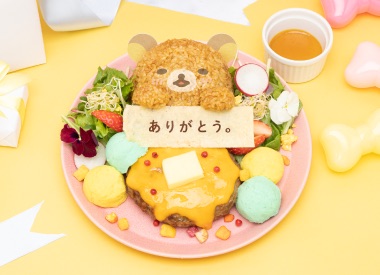
Rilakkuma’s Honey Mustard Hamburger

コリラックマのクリームパスタ

Korilakkuma’s Cream Pasta
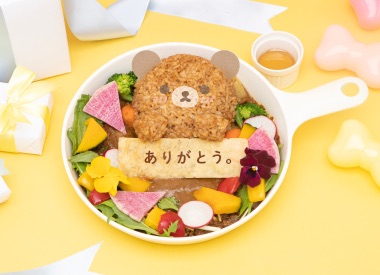
Kiiroitori’s Egg Burger

Chairoikoguma’s Cheese Curry

Rilakkuma and Friend’s Celebratory Cake

Congratulatory Flower Parfait

You Can Choose♪ Rilakkuma and Friends Mini Ice Cream

You Can Choose♪ Rilakkuma and Friends Floats

Honey Forest Jelly Soda

Relaxing Pudding Drink

Take-Out Drink Bottle
Original Merch
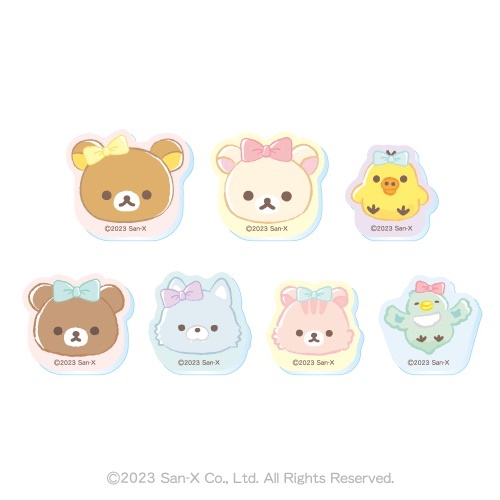
Acrylic Clip (7 varieties, random)

Acrylic Keychain (5 varieties, random)

Mini-Bottle / Muddler with Charm (4 varieties)
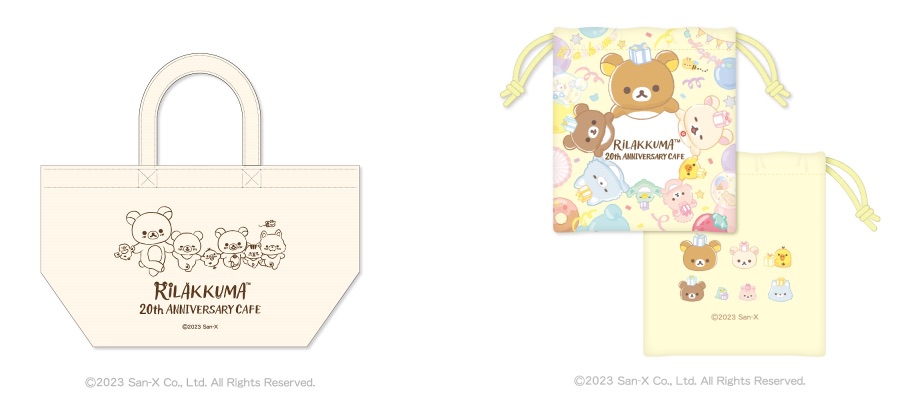
Lunch Tote / Drawstring Bag
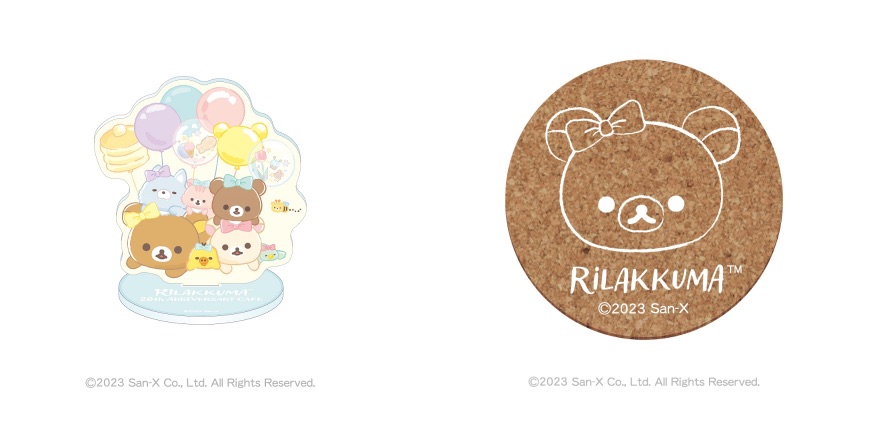
Acrylic Stand with Clip / Cork Coaster

Stuffed Animal
In addition, the cafe will offer original goods, special offers, and a Twitter campaign to celebrate Rilakkuma’s 20th anniversary.
Come enjoy the elaborate original menu and goods while sharing memories at this limited time themed cafe!
©2023 San-X Co., Ltd. All Rights Reserved.
Information
RILAKKUMA 20th Anniversary Cafe
Venue: BOX cafe&space Omotesando
Running: March 9 – April 16, 2023
Address: Pine Under Flat B1F (5-13-2 Jingumae, Shibuya-ku, Tokyo)
Reservation Fee: ¥715 (Tax included) *Reservations include bonuses.
*Reservations can be made for up to four guests per application.Online Shop: https://rilakkuma20th-cafe.jp/online_store/
Sales Open: March 9, 15:00 – April 16, 23:59
(Items will ship starting in early May 2023.)
Official Site: https://rilakkuma20th-cafe.jp -
Kobe’s Storytelling Restaurant FARM TO TABLE KANBE Now Open
Fans of Japan and Japanese culture may know that Kobe’s food scene is not to be missed. A new restaurant, KANBE, is now open and tells the story of the city’s food culture. The grand opening was on November 30 in Sannomiya.
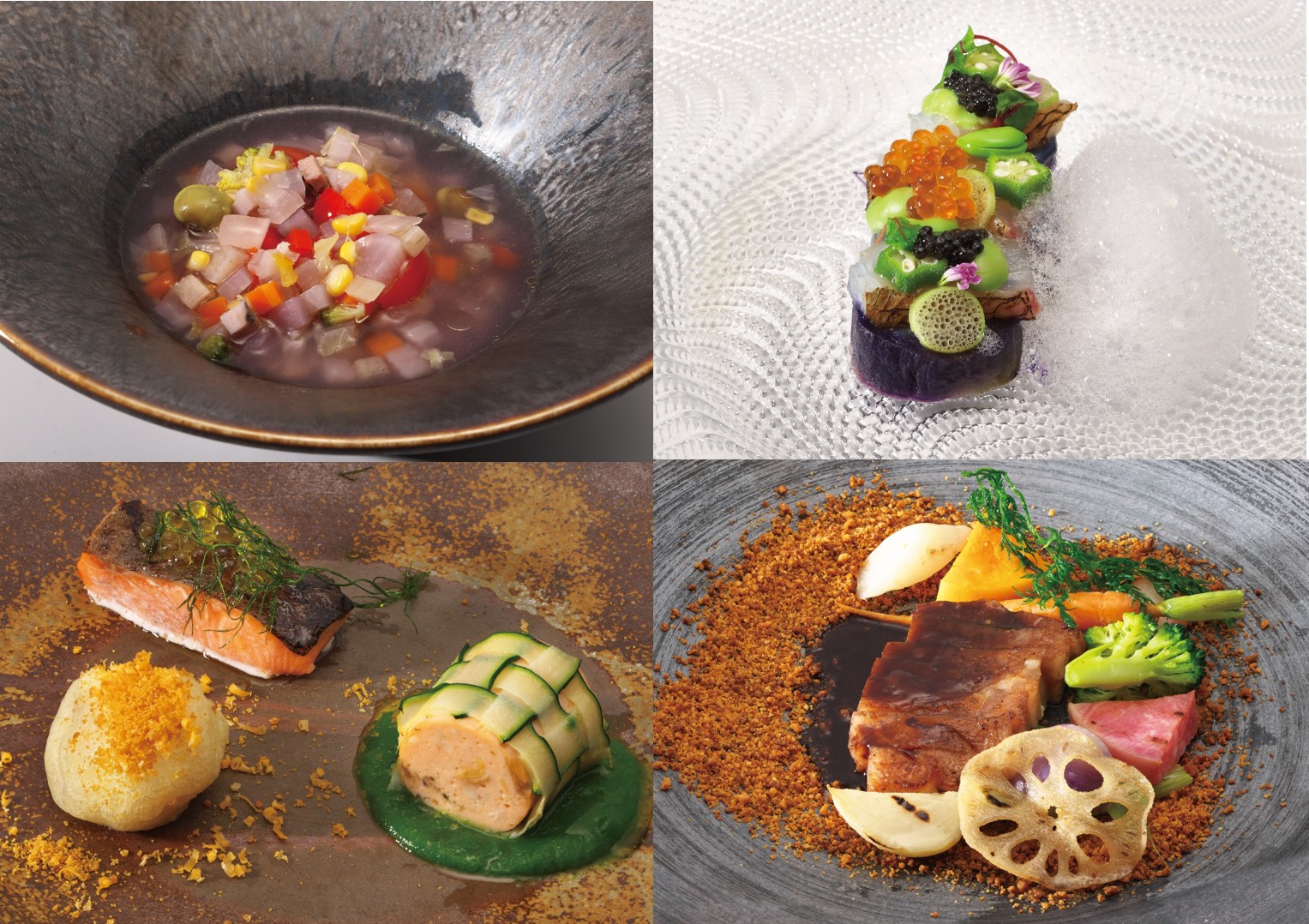
The story begins with water, the source of Kobe’s food. The city’s famed fare like Kobe beef, Suma salmon, and seasonal vegetables will take the stage through storytelling, projection mapping, and uniquely planed dishes. Ingredients are served to guests the same day that they are delivered to the restaurant, offering the freshest possible experience. The restaurant also offers a wide selection of drinks made in Kobe, including Nada Gogou sake and Kobe wine. These are made using Nunobiki water from the Rokko mountain range, meaning that everything guests enjoy was truly made in Kobe.

At KANBE, visitors will chat with a storyteller who weaves the story of Kobe’s food into the experience. A chef himself, he is well-versed in cooking methods, food history, and nutrition.

The 18-meter-long counter adds to the experience by displaying seasonal scenery, the water of Nunobiki, and the night view from Mt. Rokko. Nature sounds, like the murmuring of Nunobiki Falls and the chirping of birds, also echo through the restaurant in time with the projection mapping, creating an atmosphere that feels alive.
Why not come enjoy a new kind of dining experience?
Information
FARM TO TABLE ‘KANBE’
Opening Date: November 30, 2022
Reservations Required (May be made up to 3 days prior.)
Address: Taishin Sunset Building 7F (2-5-1 Kitanagasadori, Chuo-ku, Kobe)
Reservations/Official Site: https://www.ko-z.com/
-
Hirosaki and Hakodate to Begin Winter Tourism Campaign with Snow Miku Starting December 2022
26.November.2022 | ANIME&GAME / SPOT
The cities of Hirosaki and Hakodate in Hokkaido have announced that they will team up with Hatsune Miku’s popular iteration Snow Miku to promote tourism in the area this winter. A number of activities will begin in December 2022.
[Snow Miku x Hirohako] Collaboration Project
■Hirohako Winter Tourism Campaign Poster Featuring Snow Miku
・Period: Mid-November~February 28, 2023
・Locations: Facilities in both cities, tourist facilities, hotels, shopping areas
■Snow Miku Illustration Contest Exhibition Event
Over 50 illustrations have been submitted under the theme of Snow Miku and Hakodate / Snow Miku and Hirosaki. These will be on display through the winter!
・Running: December 1, 2022 – February 28, 2022
・Venues: Hirosaki Municipal Tourist Center (Hirosaki)
Kanemori Red Brick Warehouse (Hakodate)■Snow Miku Photo Spot
Snow Miku panels featuring shamisen and apples from Hirosaki will be on display, while the Hakodate version will include references to squid fishing and footbaths.
・On Display: December 1, 2022 – February 28, 2022
・Locations: JR Hirosaki Station, Chuohirosaki Station (Hirosaki)
JR Hakodate Station, Hakodate Airport (Hakodate)

■Digital Stamp Rally Using the Mikunavi App
A number of panels will be installed at five checkpoints in Hirosaki and Hakodate. A total of 1,000 people–500 in each city–will win original merch including a Snow Miku mask case and decorated masking tape. All you need to do is check in!
・Available: December 1, 2022 – February 28, 2022
・Locations: (Hirosaki) Hirosaki Municipal Tourist Center, Hirosaki City Machinaka Information Center,
Hirosaki Tourist Information Center, Hirosaki Castle Information Center, Tsugaru-han Neputa Village
(Hakodate) Kanemori Red Brick Warehouse, Yunokawa Hot Spring Footbath, Goryōkaku Tower,
Hakodate Green Plaza C Block (Hakodate Lumi-Pop), Old Public Hall of Hakodate Ward
■Hirohako Winter Tourism Campaign Theme Song and Music Video
The tourism theme song will get a new music video that will be broadcast on YouTube, at local tourist facilities, and on TV and radio!
・On Air: December 1, 2022~
・Theme Song: Mahou no Keshiki (Lyrics/Composition: ryuryu)
■Snow Miku Welcome Announcements to be Broadcast at Tourism Facilities, etc.
A one-minute welcome announcement by Snow Miku will air at tourist facilities!
・Running: December 1, 2022 – February 28, 2022
・Locations: Tourist areas in both cities
■Snow Miku Filters Using AR
When each barcode is scanned with a smartphone, Snow Miku will appear on the screen! Visitors can take pictures with Snow Miku to commemorate their winter trip to Hirosaki and Hakodate.
・Available: December 1, 2022 – February 28, 2022
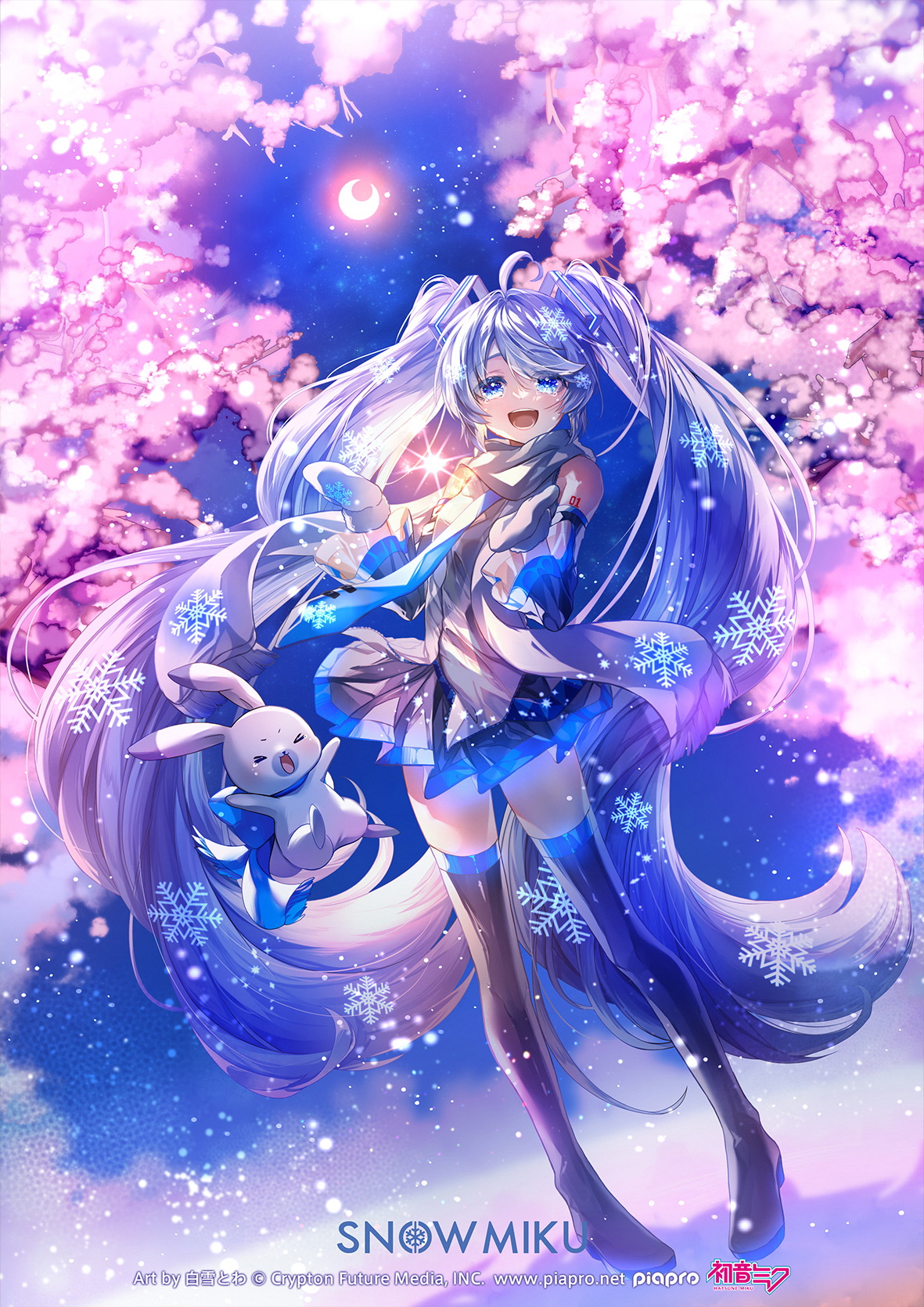



Information
Hirosaki x Hakodate x Snow Miku Tourism Campaign
Beginning December 2022
Details: https://www.hirosaki-kanko.or.jp/edit.html?id=hirohako
-
Kirby Cafe Reveals Exclusive Winter 2022 Menu
14.November.2022 | ANIME&GAME / FOOD / Uncategorized
The Kirby Cafe has announced a warm and tasty new winter menu! New items will be available from November 17, 2022 until February 28, 2023, and are sure to warm up fans of the beloved video game series.
Menu

Winter Kirby Burger & Pasta with Powdered Snow Cheese (30th Anniversary Version)

Winter Waddle Dee Burger & Pasta with Powdered Snow Cheese

Waddle Dee’s Dreamy White Stew

Chef Kawasaki’s Winter Hors d’oeuvres with Roast Beef

Transform! Carby Cake

Kirby’s Dream Ricotta Pancake

Whispy Woods Blessed Tart
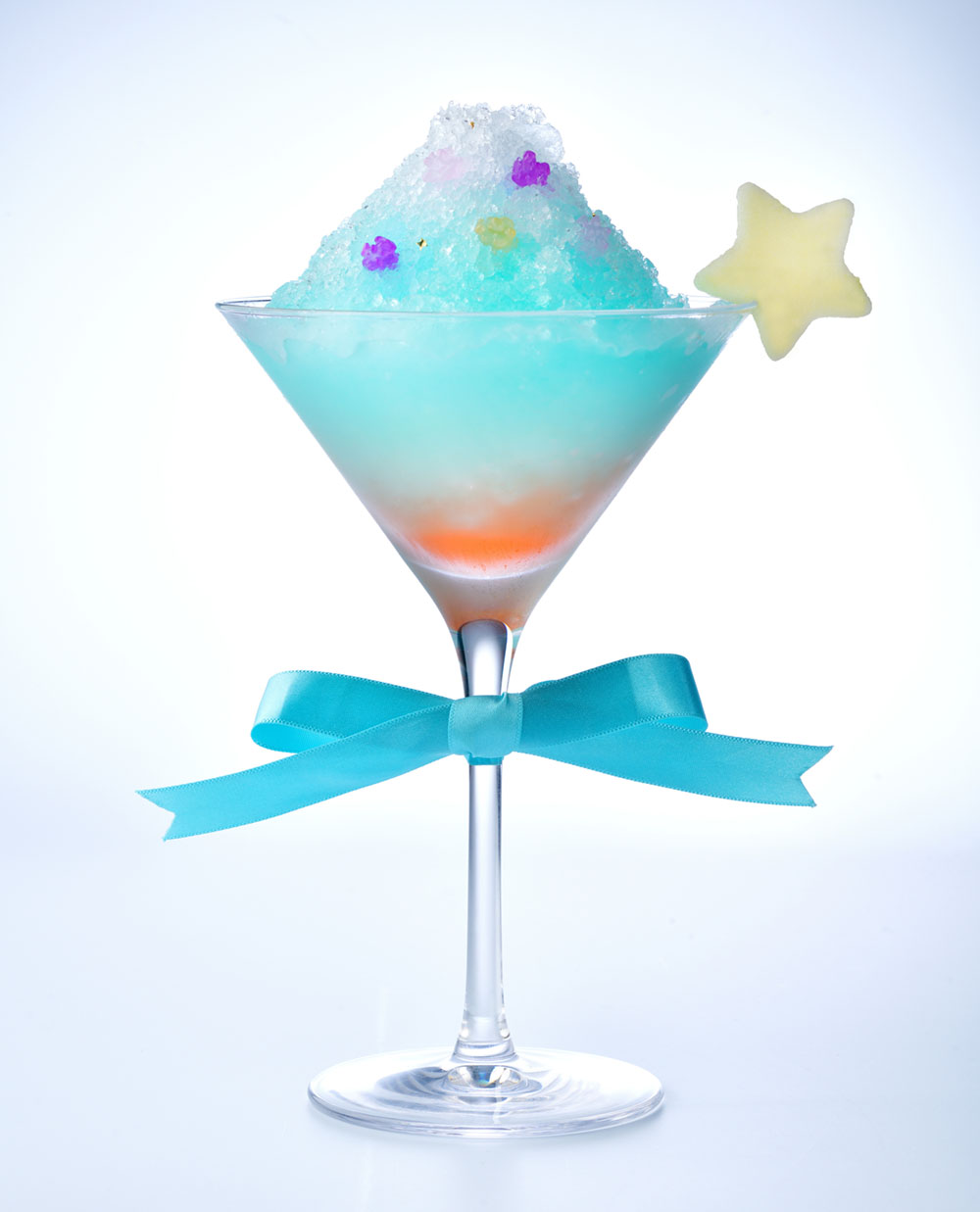
Elfilin’s Twinkle☆Frozen Drink
The Winter 2022 menu offers a variety of adorable and tasty menu items featuring Kirby and his friends all dressed up for the colder months. From a burger and pasta set to piping hot stew and fluffy ricotta pancakes, there’s sure to be something for every taste.
The Carby cake, inspired by Kirby’s special transformation in the recent game Kirby and the Forgotten Land, has been reimagined in a winter version. Fans won’t want to miss out!
This winter, come enjoy plenty of Kirby-inspired treats while you can!
©Nintendo / HAL Laboratory, Inc.
Information
Kirby Cafe Winter 2022
Available: November 17, 2022 – February 28, 2023
Venues: Kirby Cafe TOKYO, Kirby Cafe HAKATA, Kirby Cafe NAGOYA
*The Nagoya location’s winter menu will be available until February 5, 2022.
Kirby Café THE STORE: https://kirbycafe.jp/thestore/‘Kirby Cafe Pop-Up Store’ Limited Time Online Store: https://kirbycafe-popup.com/
Official Twitter: https://twitter.com/KirbyCafeJP
Official Site: https://kirbycafe.jp
-
13th BT21 Cafe to Open in Tokyo, Yokohama, Nagoya, Osaka, and Sapporo
The 13th iteration of the BT21 Cafe will open at six venues in five cities around Japan. Fans in Tokyo, Yokohama, Nagoya, Osaka, and Sapporo will want to visit this exclusive event titled ~MAGICAL TIME~. The first cafe opens in Shibuya on November 3. In celebration of BT21’s 5th anniversary, this special cafe is filled with joy and excitement and aims to give fans the best possible experience.
Cafe Menu

Magical Tea Time Set
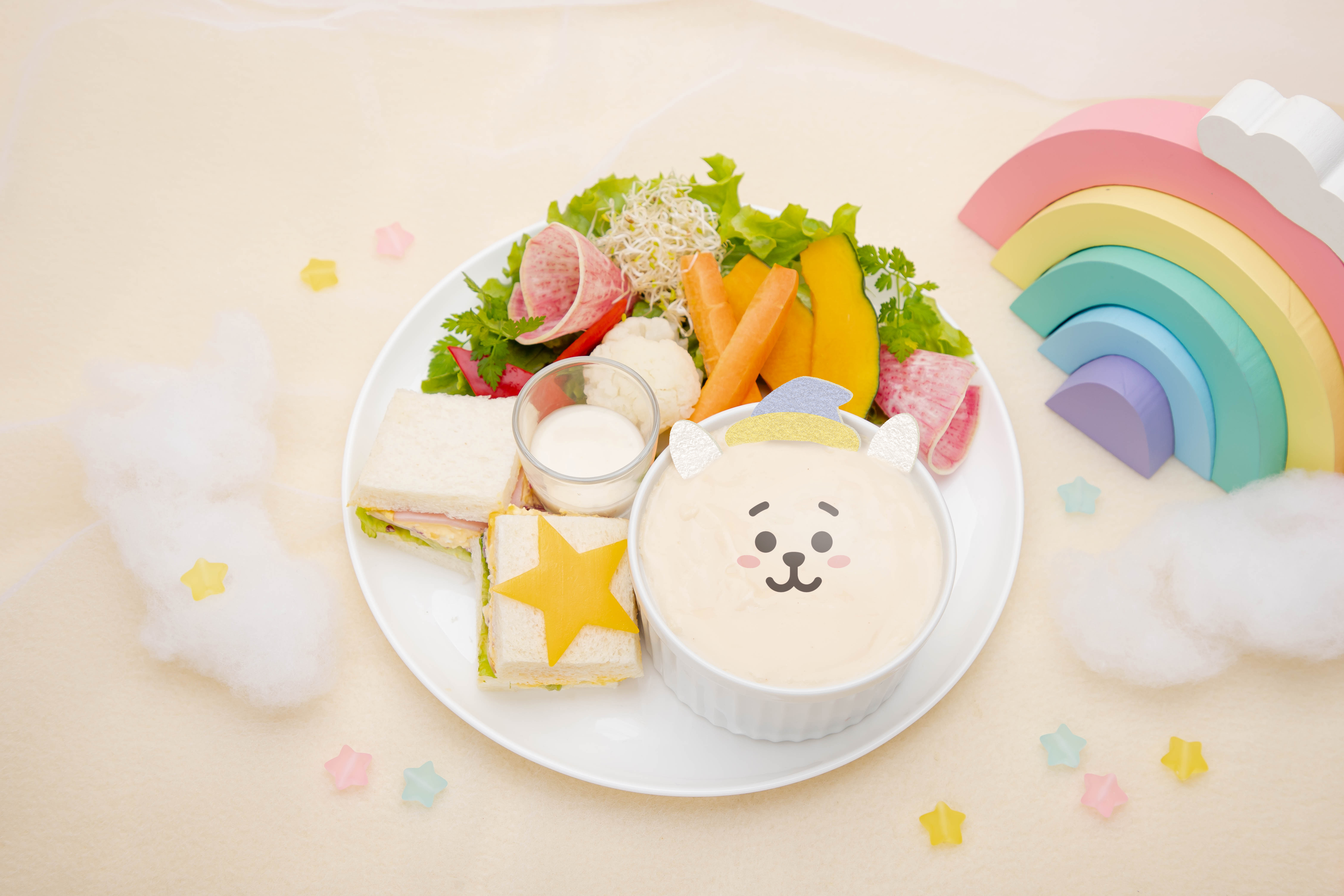
Food Plate

Food Plate (7 varieties)
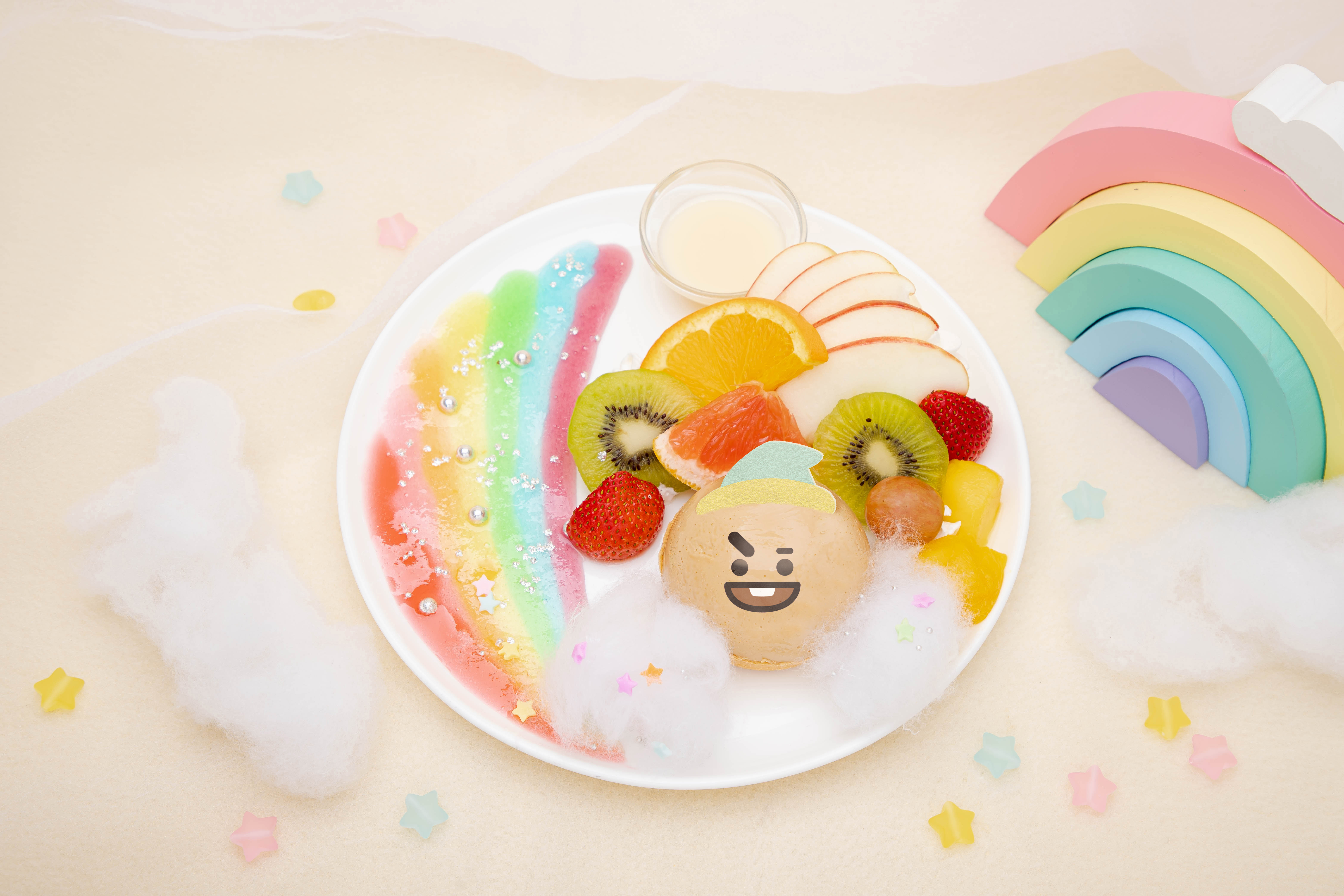
Dessert Plate

Dessert Plate (7 varieties)
Drinks

Magical Milk Tea

Black Tea

Iced Coffee / Hot Coffee
Original Goods

Acrylic Keychain (7 varieties, Random)

Acrylic Clip (7 varieties, Random)

Satin Sticker (7 varieties)

Clear Folder (2 varieties)

Handkerchief (7 varieties)
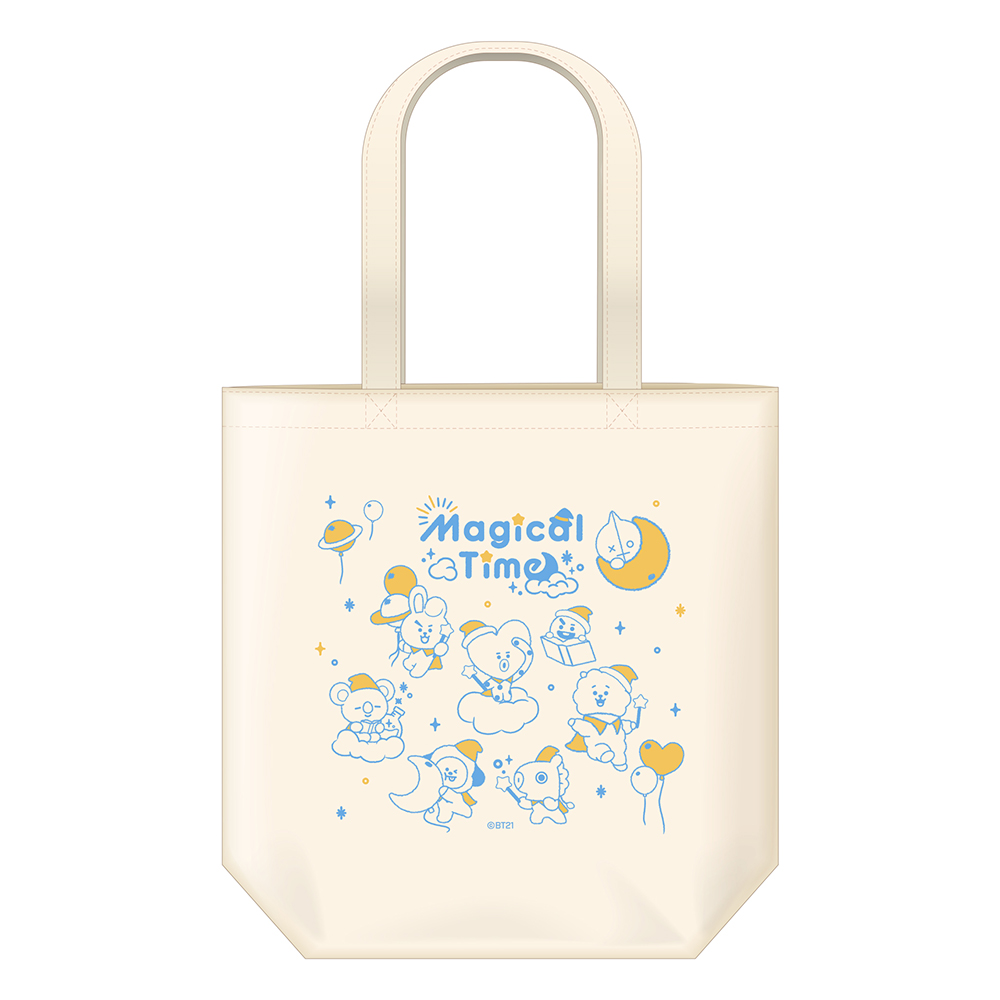
Tote Bag
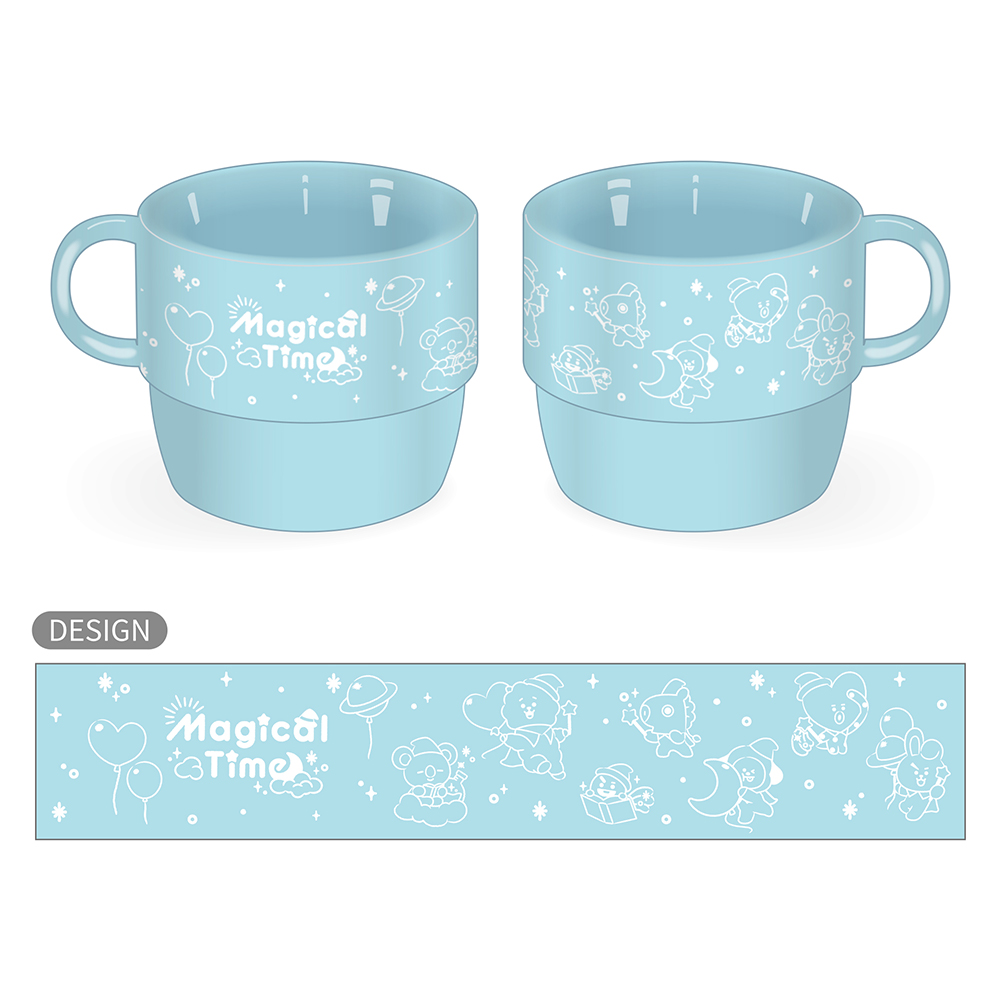
Mug
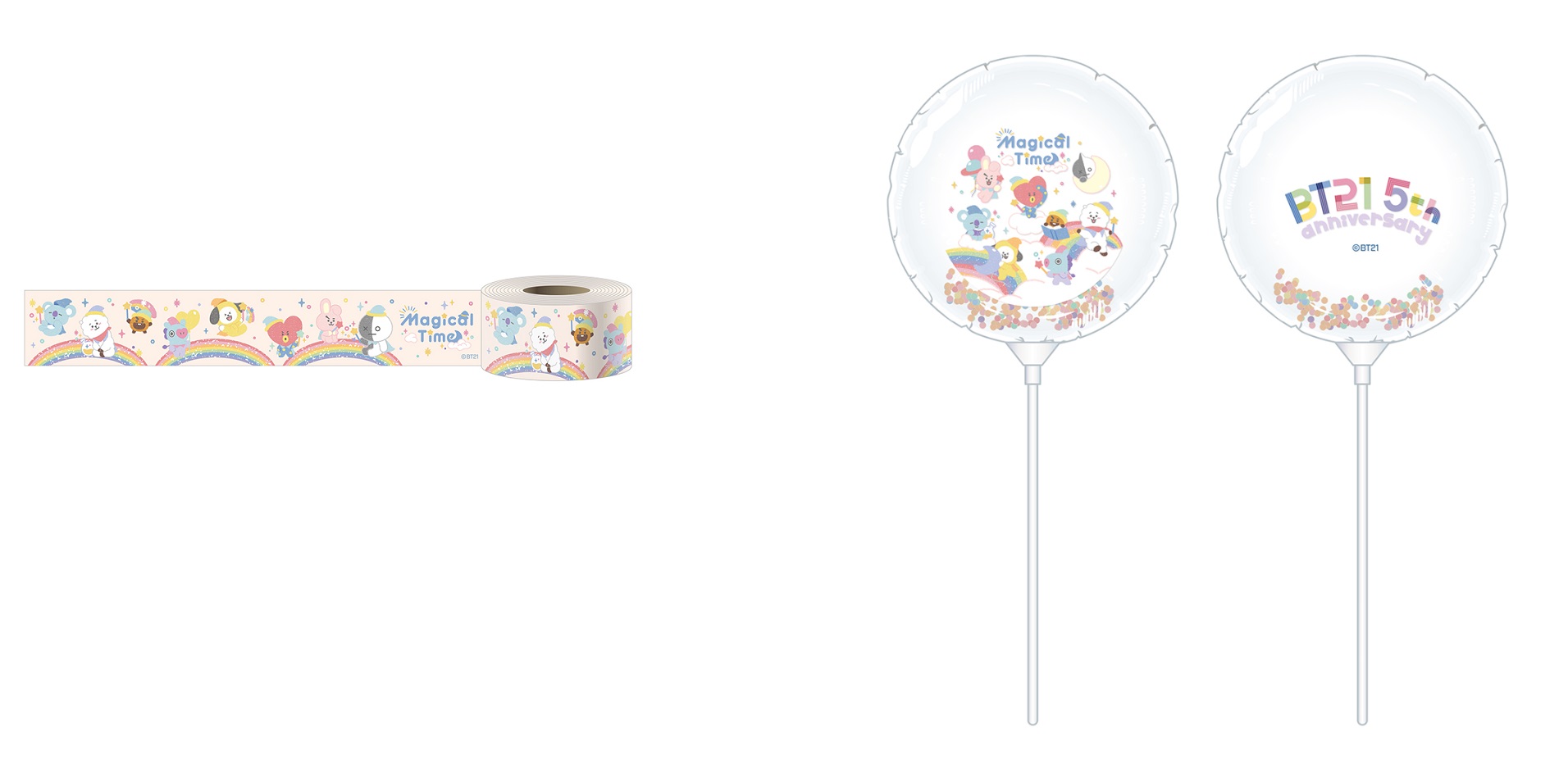
Masking Tape / Balloon on a Stick

Dolomite Coaster (2 varieties) / Mirror (2 varieties)

[Online Store Exclusive] Acrylic Keychain (7 varieties, Random)
The cafe’s new menu includes afternoon tea, perfect for warming the body and soul during the cold winter months. The colorful food items and desserts are sure to be a hit on social media, and fans will enjoy the Magical Milk Tea and other dishes inspired by the popular BT21 characters.
In addition to new merchandise and bonuses featuring newly-drawn art, a photo spot will welcome guests to the cafe and invite them to celebrate this five-year milestone.
Why not take a break from everyday life to enjoy a magical time with these cute characters?©BT21
Information
BT21 Cafe #13 ~MAGICAL TIME~
Venue/Dates
■Shibuya, Tokyo:BOX cafe&space SHIBUYA109
Running: November 3 – December 10, 2022
Address: SHIBUYA109 B2F (2-29-1 Dogenzaka, Shibuya-ku, Tokyo)
■Oshiage, Tokyo:BOX cafe&space Tokyo Solamachi
Running: January 13 – February 19, 2023
Address: Tokyo Skytree Town, Solamachi 1F (1-1-2 Oshiage, Sumida-ku, Tokyo)
■Yokohama, Kanagawa:Collabo_Index Lumine Yokohama
Running: January 13 – February 5, 2023
Address: Lumine Yokohama 6F (2-16-1 Takashima, Nishi-ku, Yokohama, Kanagawa)
■Nagoya, Aichi:BOX cafe&space Nagoya LACHIC #1
Running: December 2, 2022 – February 5, 2023
Address: LACHIC B1F (3-6-1 Sakae, Naka-ku, Nagoya, Aichi)
■Shinsaibashi, Osaka:
Shinsaibashi contact
Running: November 11 – December 18, 2022
Address: 1-6-24 Kitahorie, Nishi-ku, Osaka
■Sapporo, Hokkaido:
Cafe Interlude, Coach & Four Shinakawa
Running: November 3 – December 29, 2022
Address: 18-chome 3-jo, Kita-ku, Sapporo
Reservations: https://box-cafe.jp/
Online Shop
Open: November 3, 11:00 – December 4, 23:59
https://box-cafe.jp/online_store/ -
Q-pot CAFE to Offer Cute Halloween Sweets to Celebrate 10th Anniversary
05.September.2022 | FOOD
Q-pot CAFE in Omotesando will be offering up some Halloween treats to celebrate the location’s 10th anniversary! Guests will be able to sample these special sweets from September 3 until October 31, 2022.
Happy Halloween! Afternoon Tea Set

The festive Happy Halloween afternoon tea features pink Jack-o’-lantern macarons and other Halloween-inspired sweets.
Fluffy Floating Ghost Plate (Drink Included)

The adorable ghost is made from fluffy milk mousse covered with gyuhi, a typical ingredient in Japanese sweets made from rice flour. Inside is blackcurrant and redcurrant jelly with an incredibly sweet and sour flavor.
Black Devil Tea Mocha

Featuring large devil wings, this tasty and eye-catching beverage is a mix of black tea, chocolate, and milk. When the cocoa cream melts, the taste changes to something creamy and cozy, perfect for the autumn months.
Shimmering Blueberry & Grapefruit Soda

This refreshing sweet and sour drink combines blueberries and pink grapefruit along with soda and pearl powder.
Come enjoy Halloween while celebrating the cafe’s 10th anniversary!
Information
Q-pot CAFE 10th Halloween Menu
Location: Q-pot CAFE Omotesando
Running: September 3 – October 31, 2022
Hours: 11:00-19:00 (Last Order at 18:30)
Details/Reservations: http://www.Q-pot.jp/news/2022/08/1746.html
-
Blue Lock Anime Pop-Up Store and Cafe to Open at Tokyo Solamachi Tree Village
26.August.2022 | ANIME&GAME / SPOT
A pop-up store and cafe inspired by the anime series Blue Lock will open in September! The series is due to begin airing in October 2022.
The limited-time cafe and shop will open at Tokyo Solamachi Tree Village. Guests will be able to enjoy original dishes inspired by characters from the series, and goods featuring new illustrations will be on sale!
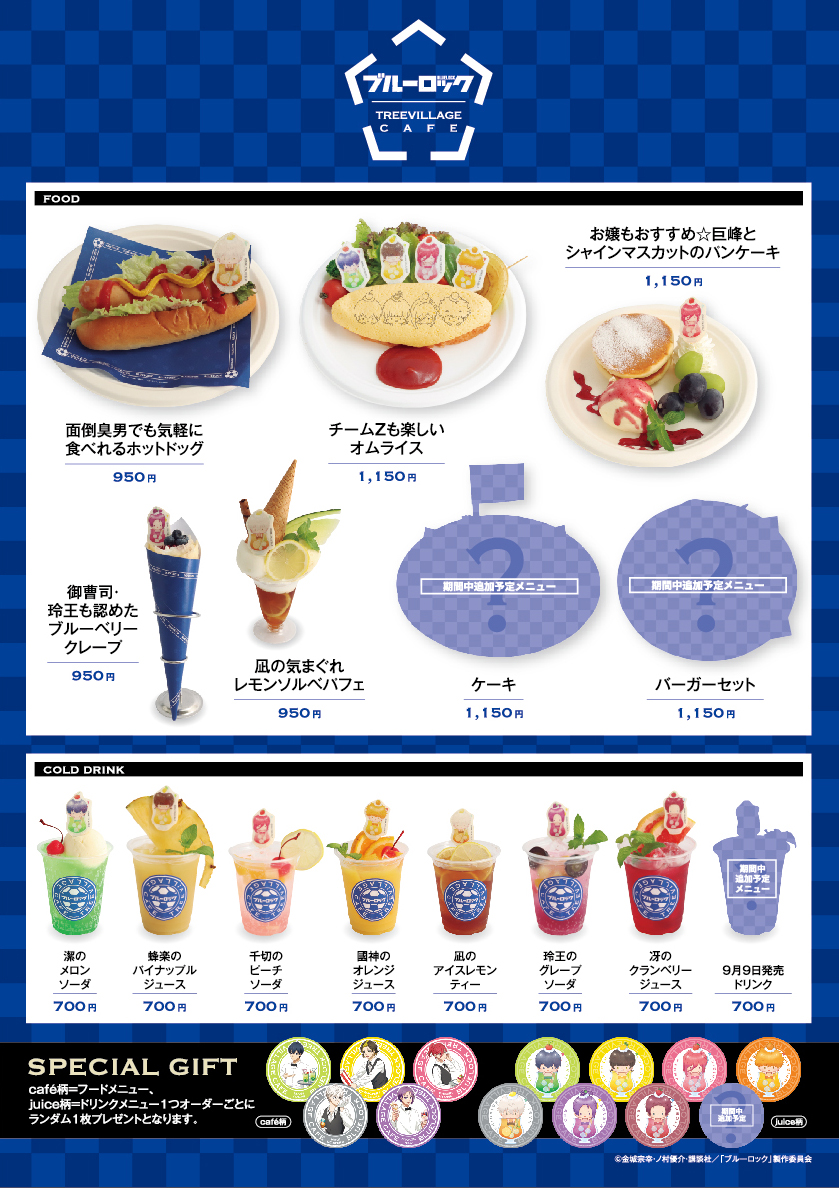

If you’re a fan of the series, you won’t want to miss taking a trip to Skytree in September!
Information
Blue Lock Tree Village Cafe
Running: September 1 – September 30, 2022
Location: Tokyo Solamachi West Yard, 4F, #4
Official TV Channel Shop ~Tree Village~
Shop Hours: 9:00-21:00
Tree Village Official Site: https://tree-village.jp/
-
Teppanyaki and Yakiniku Restaurant Honten Yamashina Opens in Ginza
On July 18, the upscale teppanyaki and yakiniku restaurant Honten Yamashina opened a new location in Ginza! The hybrid restaurant has taken over the entire top floor of GINZA PLACE, which is directly connected to Ginza Station. Overlooking the Ginza 4-chome intersection, it’s a gorgeous place to enjoy some authentic Japanese cuisine.

Honten Yamashina mainly uses fully-matured Omi beef, the highest grade available among Shiga Prefecture’s top-tier beef, from Okazaki Farm. The cows are allowed to fatten for a considerable amount of time and live stress-free lives for over 40 months. Less than 1% of all Wagyu cattle are shipped after 24 months of age, and this delectable meat is characterized by its sharp taste and fattiness.

Luxurious Wagyu and Sea Urchin Sushi

Early Summer Plate to Enjoy with Seasonal Flowers
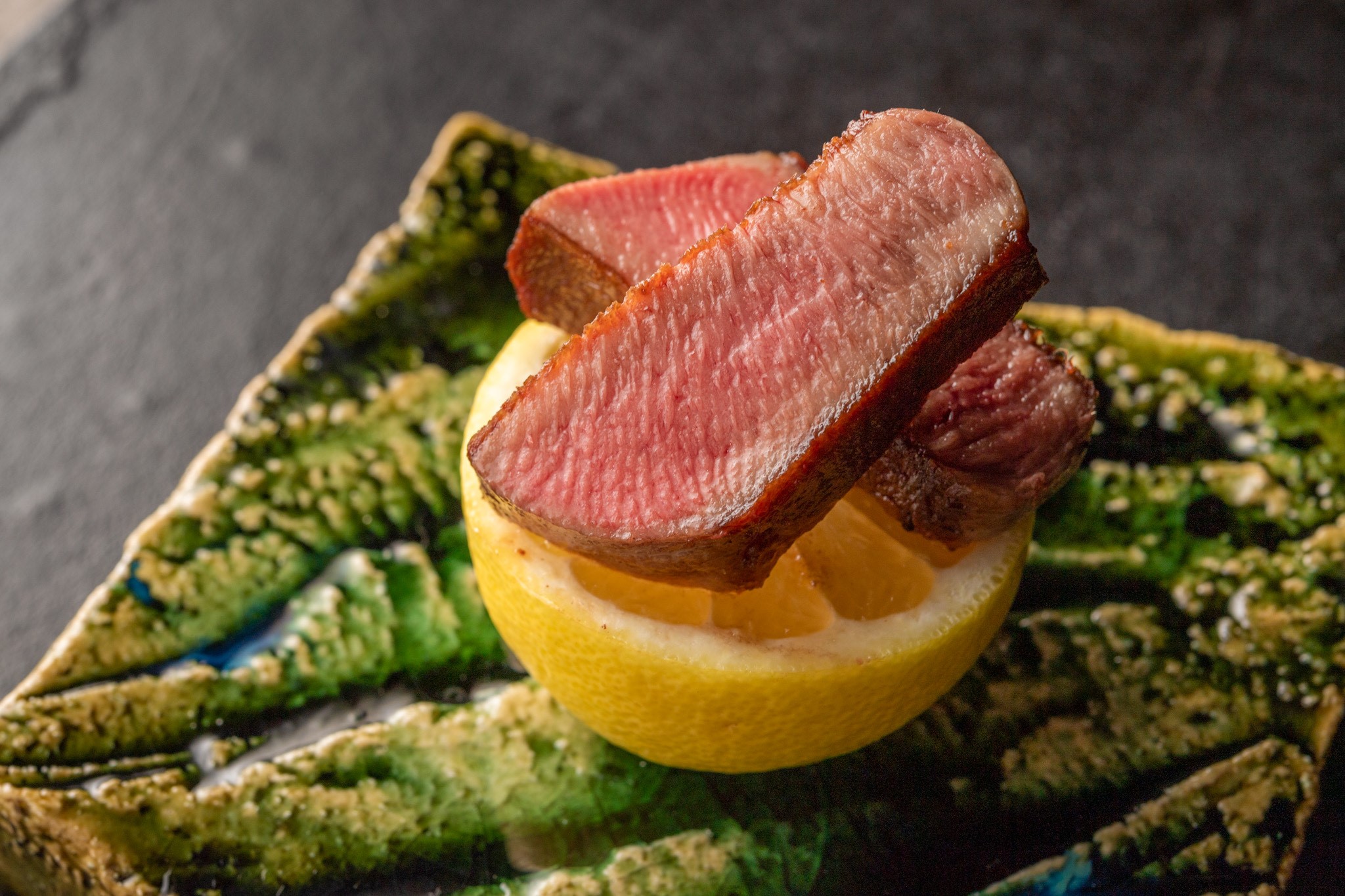
Selected Extra-thick Beef Tongue Steak Made with Refined Attention to Detail

Grilled Spiny Lobster Made on a Charcoal Grill

The Playful Yamashina Wagyu Slider

Melt-in-your-mouth Sweet Amala Tomato (Vegetable of the Day)

Hand-selected Omi Beef Steak

Truffle Omurice
Japanese-style Teppanyaki

Guests can enjoy authentic Japanese teppanyaki cuisine with a modern twist. While sitting at the contour, visitors will enjoy a live performance by Taku Osada, a teppanyaki chef with over 20 years of experience.
The wide variety of meat can be enjoyed in a number of different ways, whether it be raw, grilled, stewed, or properly cooked. From tongue and rump to filet and sirloin, you won’t leave hungry. Visitors can also enjoy seafood and seasonal Japanese vegetables along with their meat, and the flowers and leaves that adorn each plate will change depending on the time of year.
In addition to rare teppanyaki dishes like skirt steak and 3cm-thick beef tongue, Honten Yamashina also offers some playful dishes such as sliders. As the temperature differs on different parts of the steel cooking plate, each item can be cooked to a temperature that maximizes its specific flavor. Honten Yamashina also has a massive cellar housin over 1,000 bottles of wine and hard-to-find spirits.
Japanese-style Yakiniku

For those looking for a more private experience, guests can enjoy yakiniku in a completely separate room. Each private room has a grill that will cook meat to the perfect temperature, and only at Honten Yamashina can you enjoy fully-matured Omi beef. The signature cutlet sandwich is made with chateaubriand cooked at a low temperature and deep-fried in a thin batter, then served on crispy bread with a soft, fluffy interior.
Teppanyaki and yakiniku are typically thought of as meat-based dishes, but the restaurant can accommodate vegetarian guests if contacted in advance.
When Japan opens up to tourism, will you be visiting this incredible restaurant in the heart of Tokyo?
Information
Honten Yamashina
Address: GINZA PLACE 11F (5-8-1 Ginza, Chuo-ku, Tokyo)
Hours: 17:00-23:00
Closed SundaysOfficial Instagram: https://www.instagram.com/honten_yamashina/
-
Toy Story Aliens Cafe to Open in Tokyo, Osaka, and Nagoya
The Toy Story Aliens Cafe will be opening for a limited time in Tokyo starting July 23, in Osaka on July 27, and in Nagoya on August 4. Fans of the film series will remember the adorable Alien characters, originally shown as prizes in a crane game. This pop-up cafe will feature themed dishes and merchandise, and Pixar fans should be sure to attend!
Menu
Food

Space Curry

Green Pasta

Alien Burger A (Teriyaki Soy Meat) / Burger B (Tomato Soy Meat) / Burger C (Chicken & Potato)

Moon Landing?! Potato & Bread

Kids Plate

Fruit Bread
Drinks

Alien Smoothie

Space Soda

Melon Milk

Space Crane Game Cider / Grape Juice

Hot Tea / Hot Milk
Goods






The food menu includes a tasty black curry, a green pasta featuring broccoli, edamame, spinach, and snap peas, and three types of alien burgers featuring either teriyaki soy meat, tomato soy meat, or chicken and potato. Even the drinks stick to the Alien theme, and the menu includes an Alien Smoothie with a tasty banana yogurt flavor.
Guests will also be able to purchase event-exclusive merchandise from keychains and stickers to tote bags and letter sets.
©Disney/Pixar
Information
Toy Story Aliens Cafe at OH MY CAFE
Venues/Dates:
Tokyo: OH MY CAFE TOKYO
Running: July 23 – September 25, 2022
Tokyu Plaza Omotesando Harajuku Mall 3F (4-30-3 Jingumae, Shibuya-ku, Tokyo)
Osaka: OH MY CAFE OSAKA
Running: July 27 – October 3, 2022
1-6-1 Shinsaibashisuji, Chuo-ku, Osaka (2F)
Nagoya: kawara CAFE&KITCHEN
Nagoya PARCO
Running: August 4 – October 10, 2022
Nagoya PARCO South Building 5F (3-29-1 Sakae, Naka-ku, Nagoya)
Details: https://planet.ohmycafe.jp/Online Store
July 23, 12:00~
-
Retro Cafe Inspired Items Available from Thank You Mart
THANK YOU MART will begin selling a total of 18 unique items starting in late June. These items were inspired by Japanese cafes during the Showa era, and give off the perfect amount of retro vibes. Most items at THANK YOU MART costs ¥390 (¥429 with tax).

The new cafe-inspired items are perfect for those longing for days long past, made with impactful yet subdued colors and classic patterns. The logo looks like something pulled out of the Showa era, so if you’re a fan of classic Japanese style, be sure to grab some of these inexpensive items when they drop later this month!
Information
THANK YOU MART – Cafe Amour
Sales begin in Late June 2022
Where to Buy: All THANK YOU MART locations, THANK YOU MART Online ShopOfficial Site: https://www.390yen.jp/
-
Unique Summer Afternoon Tea Available at Haute Couture Cafe in Tokyo
Located along the Meguro River, Haute Couture Cafe is known for serving up some of the best afternoon tea in Tokyo. The location is incredibly photogenic and often pops up on social media, covered in flowers welcoming guests to what feels like a fairy tale land. From July 1 until September 4, visitors to the cafe can enjoy a Peach and Shine Muscat Afternoon Tea set, perfect for summer and incorporating seasonal fruits.

The fresh peaches and shine muscat (a type of luxurious grape found in Japan) are delivered from a nearby market daily. By using peaches without heating them, such as in the compote, guests can enjoy the juiciness of the raw fruit in a new way.

The lineup of delicately prepared and hearty savory dishes includes Peach and Prosciutto Cappellini, and guests wanting to enjoy more can order this as a lunch or dinner course as well. There are six courses in total, including the fresh-squeezed grape and muscat Mont Blanc plan and a Peach Cheesecake plan with a drink included. The cafe also offers anniversary plans, so why not bring your sweetheart?

The theme of this summer afternoon tea is ‘an adorable purple space.’ Guests will be surrounded by light purple wisteria as they enjoy this colorful spread.
Why not enjoy this summer treat as you look out over the river?
Information
Peach & Shine Muscat Afternoon Tea
Venue: Haute Couture Cafe
Available: July 1 – September 4, 2022
Reservations/Official Site: https://haute-couture-cafe.owst.jp/



